The Highlands is packed with castles and palaces, from the small and ruined to the large and still lived in. Discover fascinating history and tales of romance and royalty.
Many castles and palaces can be reached by train, with more an extra bus or ferry journey away.
See our Guide to the busy city of Perth for other places to visit, as well as accommodation and restaurants.
THE BLACK WATCH CASTLE & MUSEUM
Balhousie Castle, with its origins in the 12th century, is the ancestral home of The Black Watch.
Inside, the museum tells the history of this significant regiment from its formation in 1749 to the modern day, through uniforms, paintings, medals, photographs, diaries, weapons and military equipment, film and reminiscences. There is a bistro on site.
SAVING! Part of the 2FOR1 entry scheme when arriving by train!
Transport: 20 minutes' walk from Perth train station.
Known as the Palace of Kings, the site was the crowning place of Scottish Kings prior to the present Palace's construction. This is the location where Macbeth, Robert the Bruce and Charles II, amongst others, were crowned.
The present day building dates from 1808. The interior of the palace is open together with the gardens and woodland walks. There is a coffee shop on site.
Transport: 50 minutes' walk from the centre of Perth, or 5-10 minutes' bus journey plus 15 minutes' walk from the end of the drive - see Stagecoach services 3, 3A, 58, 58A (within Perth PlusBus ticket zone). Alight at stop 'Scone, Palace' and walk up Queen's Drive.
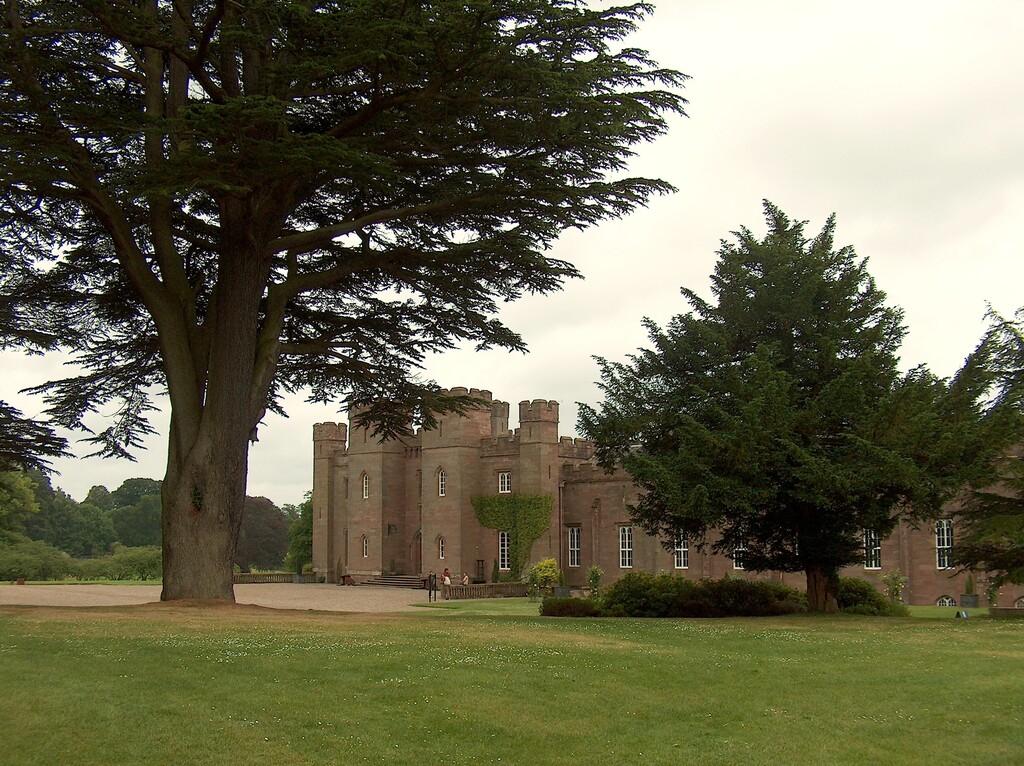
Scone Palace
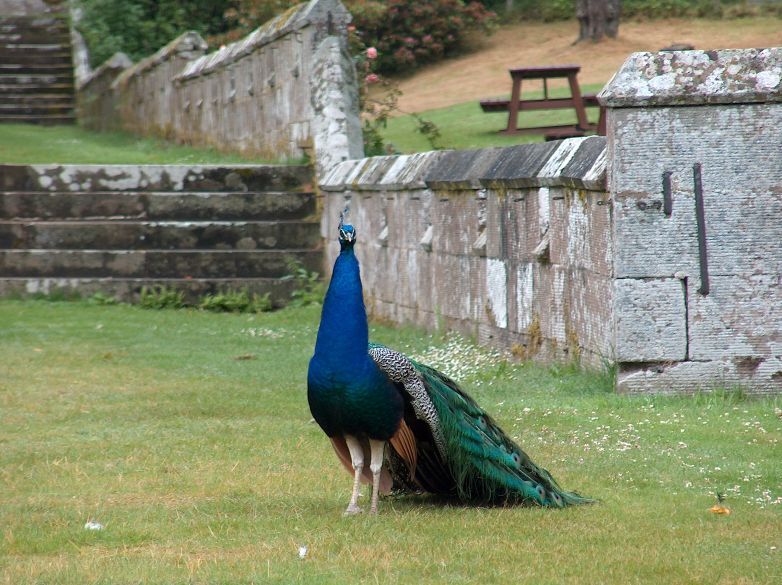
Look out for this fellow and friends in the gardens!
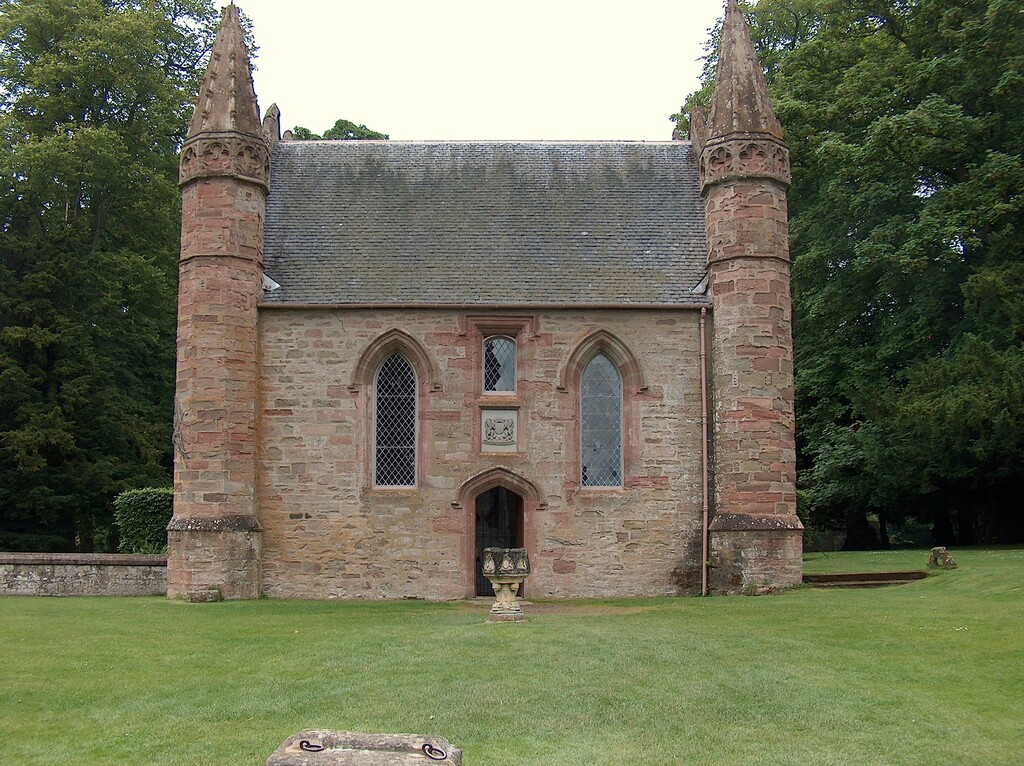
Chapel at Scone Palace
This castle is on the outskirts of Perth. Consisting of two towers built in the 15th and 16th centuries, the castle was known as the house of Ruthven.
Highlights include a 16th century painted ceiling and the maiden's leap - a 9 foot gap between the top of the two towers which is named after a daughter of the Ruthvens, Dorothea, who jumped over it while fleeing from her mother after being discovered visiting her fiance in the other tower.
The castle has had many famous visitors including Mary Queen of Scots who took her honeymoon here in 1565.
SAVING! You can get 25% off entry when you arrive car-free (book online with code GOOD25 and show your bus/train ticket or bike on arrival).
Transport: 20 minutes' bus journey plus a few minutes' walk - see Stagecoach services 14, 14A, 15, 15A (unfortunately not within Perth PlusBus ticket zone). Alight at stop 'East Huntingtower, Castle Brae' and walk up Castle Brae. You will be glad you went by bus when you see the parking arrangements!
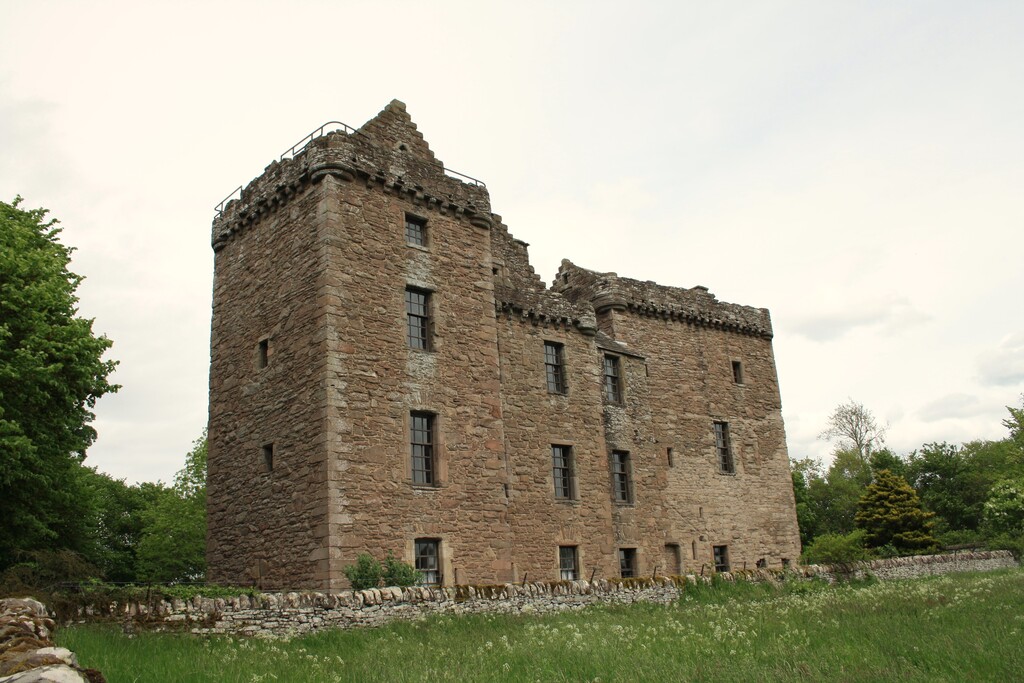
This is modest sized as castles go!
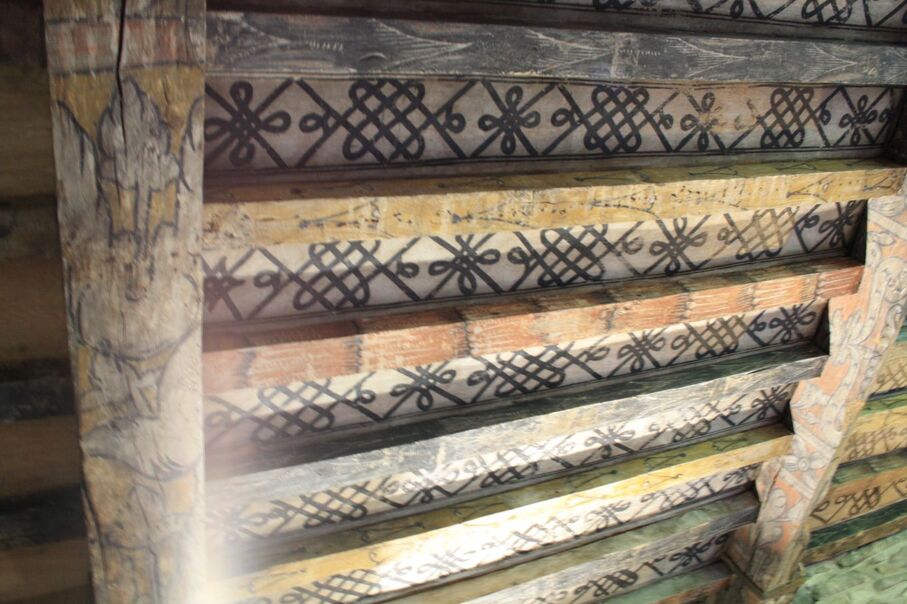
Part of the attractive painted ceilings
This is the best visitor attraction we have visited and the best value for money.
Blair Castle is the seat of the Dukes of Atholl and home to Europe's only private army, the Atholl Highlanders. This is a picturesque white castle which was started in 1269 and progressively developed since then, set in beautiful grounds with mountains in the background.
Inside the castle a self-guided tour will take you on a visit to over 30 different rooms.
The gardens include a fantastic 9 acre walled garden, woodland walks with some of Britain's tallest trees, a sculpture trail, red deer park, field of Highland Coos, and a ruined Kirk which is the resting place of Jacobite leader Bonnie Dundee. There is also a woodland adventure playground for children.
You can visit the castle and grounds, or grounds only. Even if you visit the grounds only, there is so much to see. Those with grounds only tickets also have access to the restaurant, shop and toilets.
On our most recent visit with a grounds only ticket we spent 3 hours here and could easily have stayed longer; visiting the castle and grounds you could spend the whole day here.
Transport: 15 minutes' walk from Blair Atholl train station. If you visit the castle late in the day, the main driveway gates will be closed when you leave. However, it is still possible to get out that way through them as a pedestrian, don't follow the cars leaving the long way!
See our Guide to the picturesque village of Blair Atholl for other places to visit, as well as accommodation and places to eat.
Prepare for lots of photos, we had a difficult time cutting it down to just these...
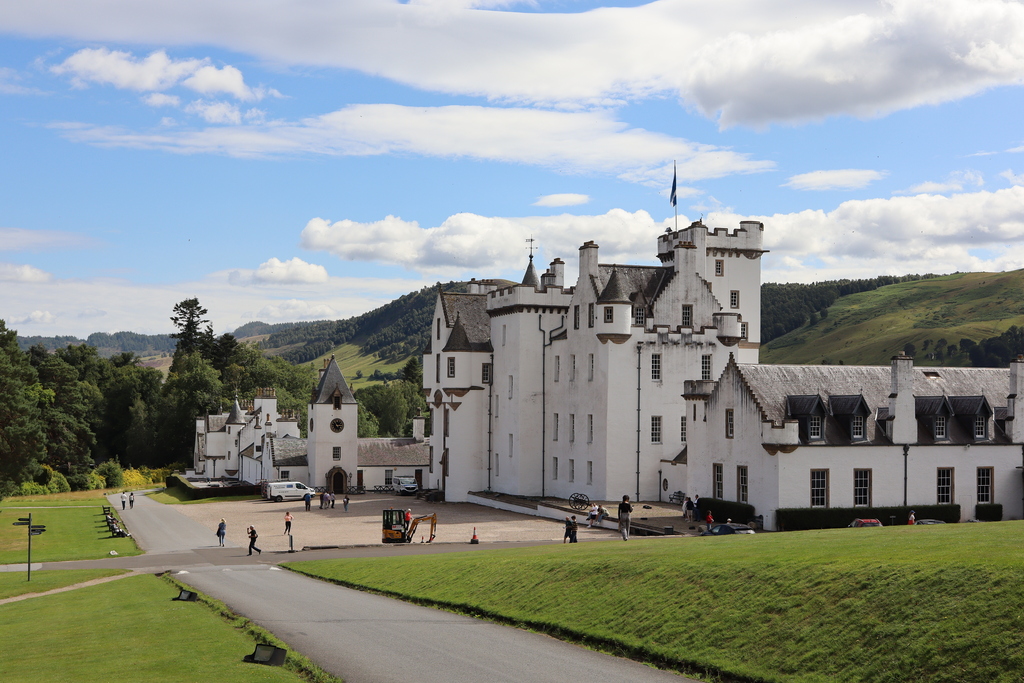
What a glorious setting
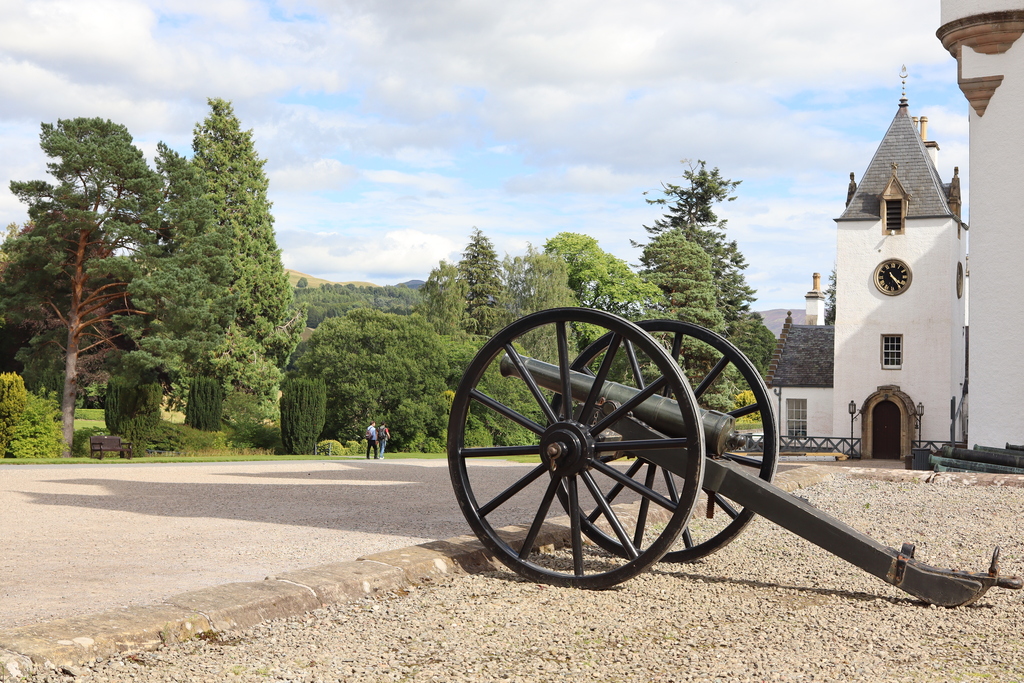
A reminder of its army connection
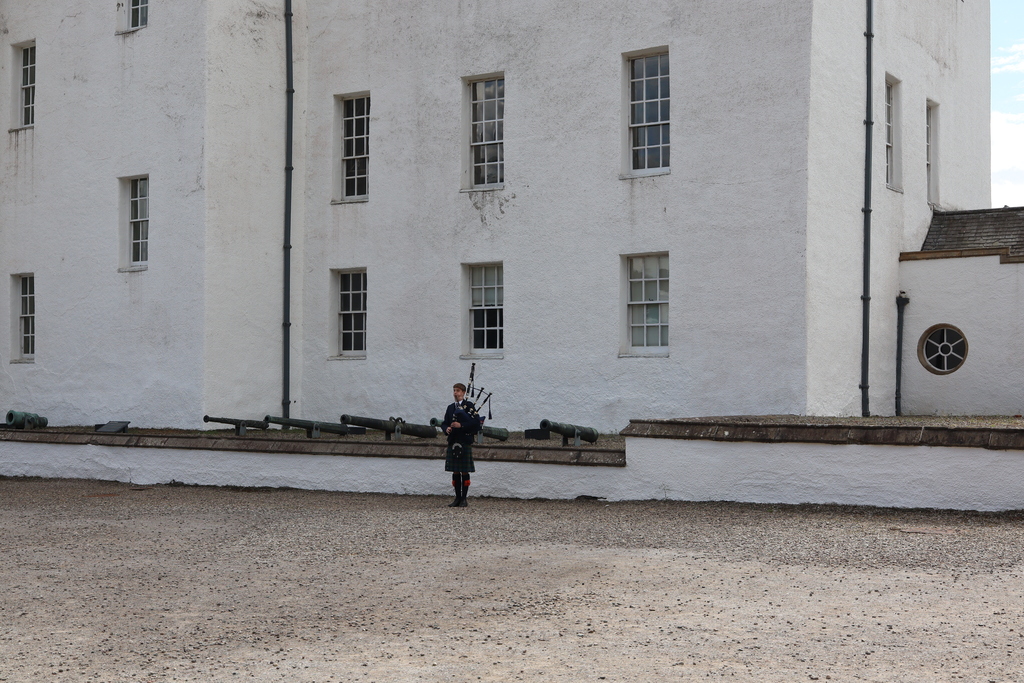
If you're lucky you will hear a piper
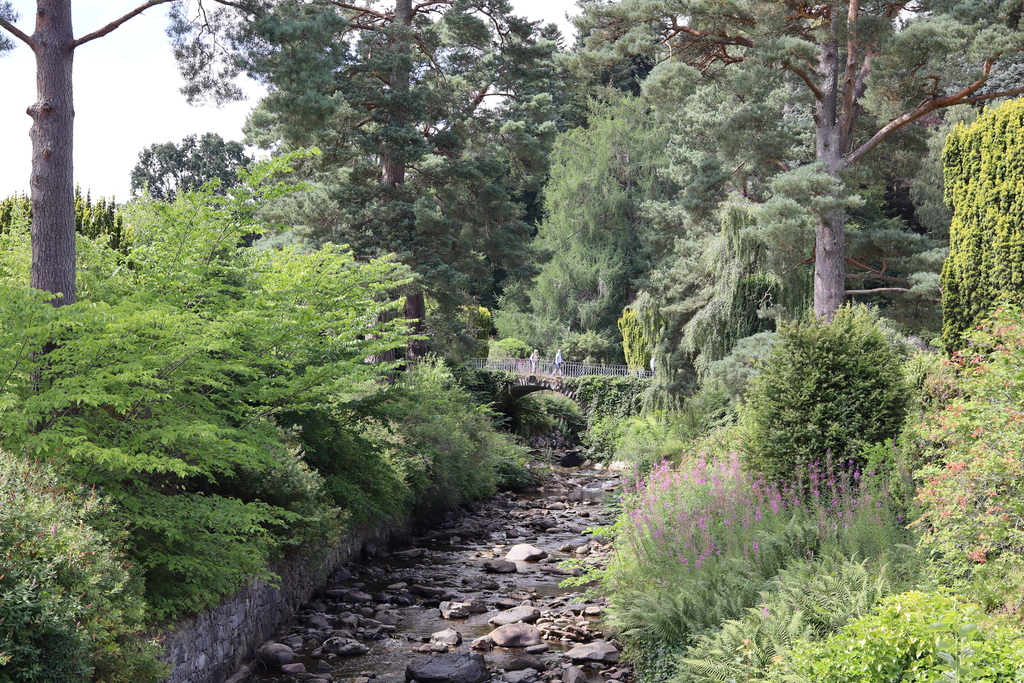
Banvie burn flows through the grounds
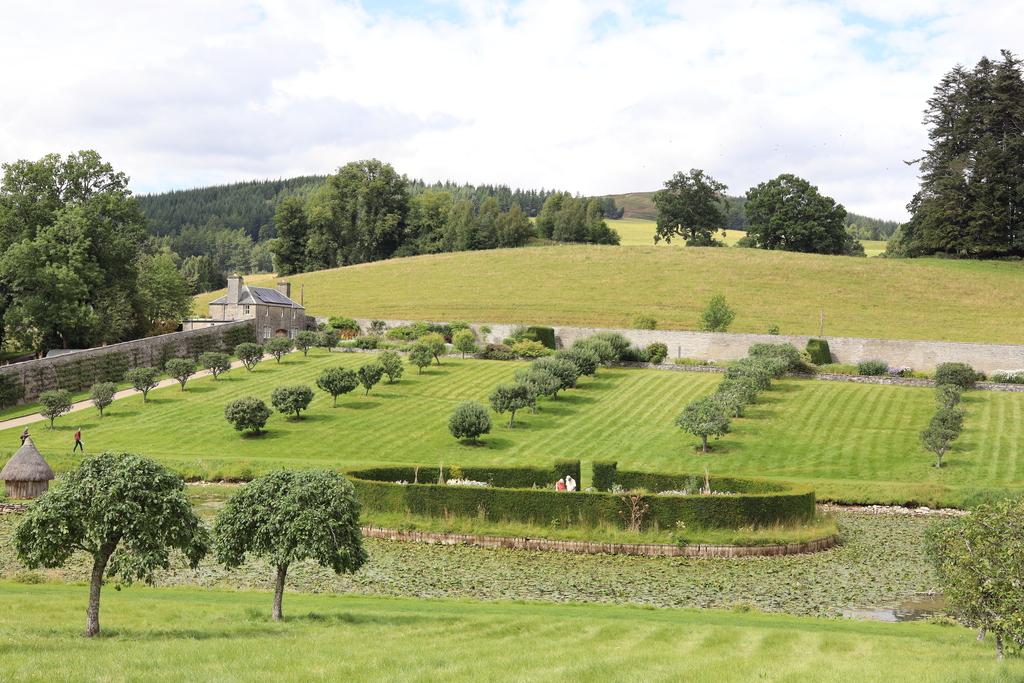
Can you spot the thatched duck house in the walled garden?
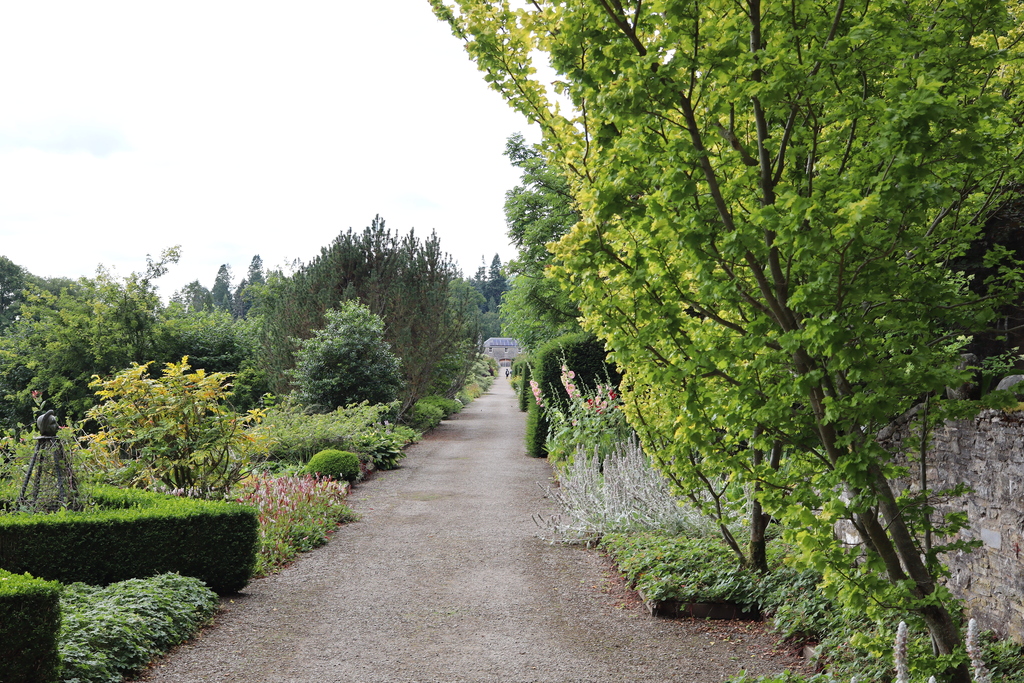
Lazy summer days...
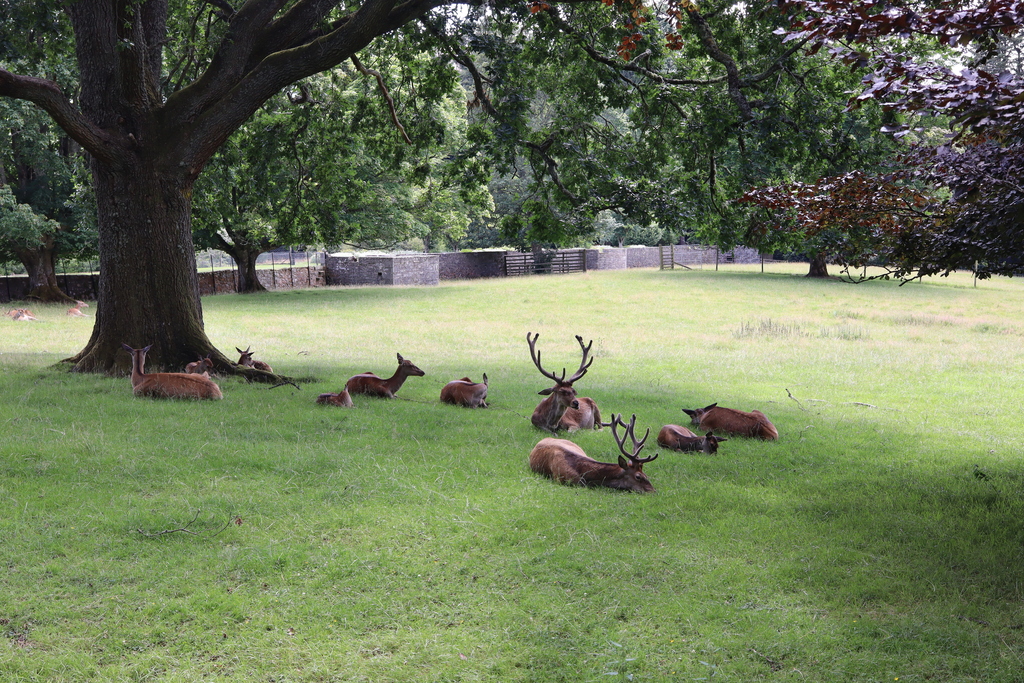
The deer are likely to be close up
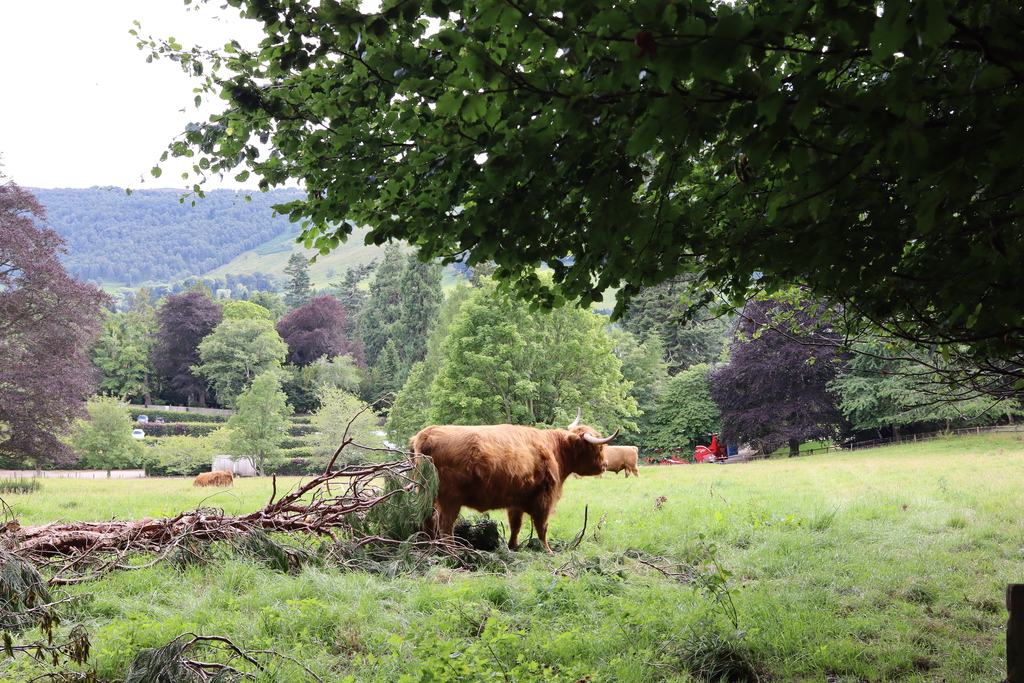
Handsome fellow
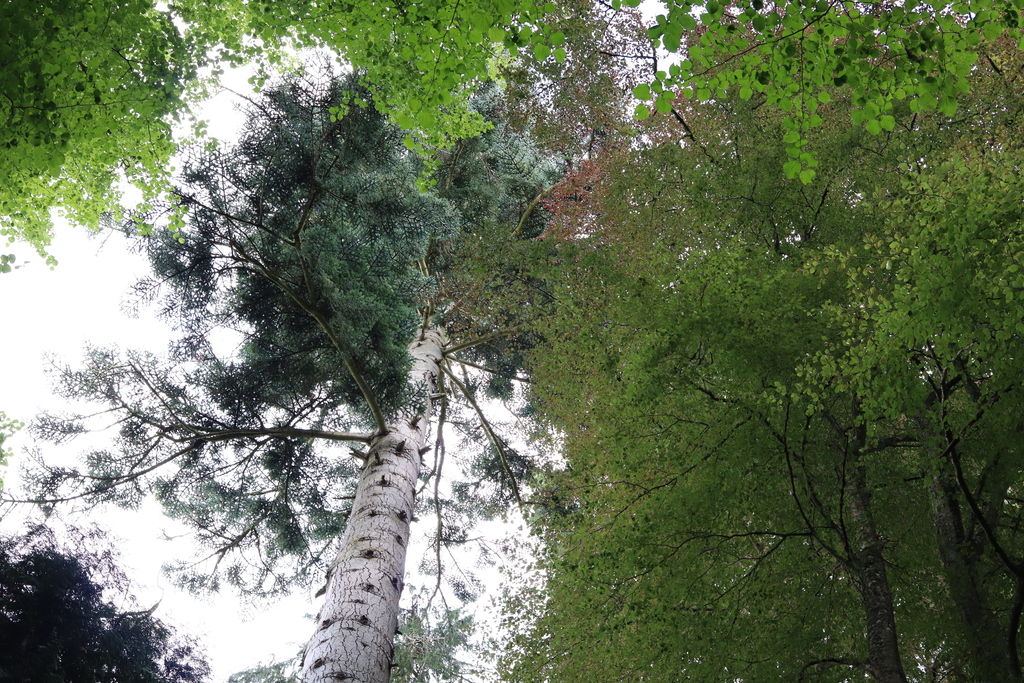
Don't get dizzy looking at the tall trees
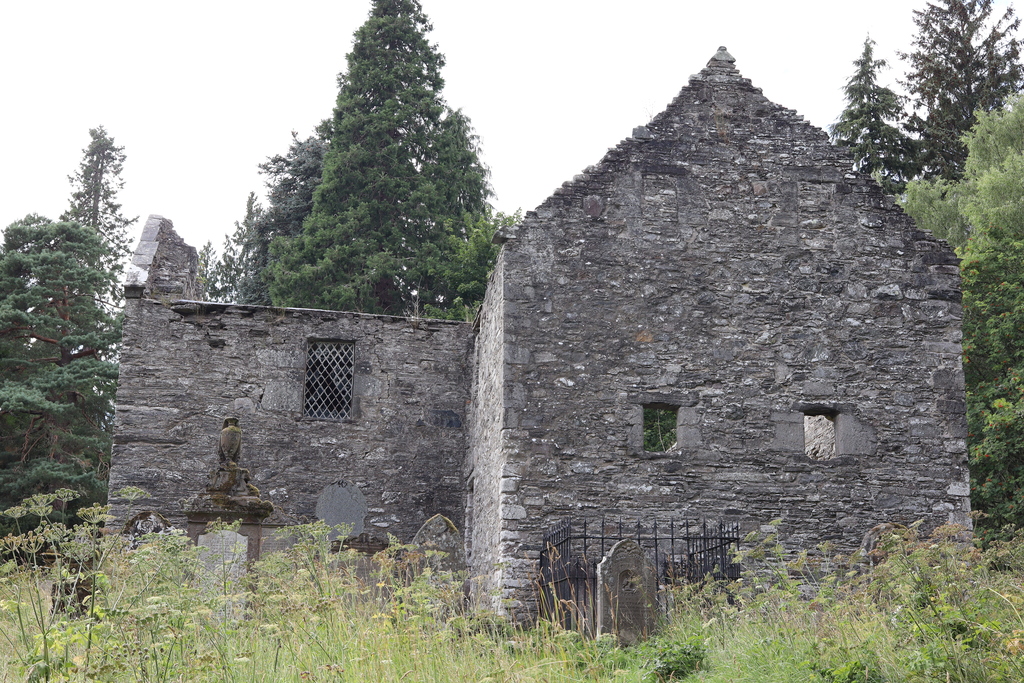
16th century St Bride's Church
See our Guides to the busy city of Inverness for other places to visit, as well as accommodation and restaurants.
The castle's prominent position on a hill overlooking the river, together with its attractive appearance, have made it one of the city's most famous landmarks.
A castle was originally built on the site in the 11th century and was destroyed by the Jacobite Army in 1746. The current castle was built in 1835 to house the Sheriff's court and police station, both of which now have new premises.
Today it has been renovated and was re-opened to visitors in December 2025. The Inverness Castle Experience celebrates the ‘Spirit of the Highlands’ through stories about landscape, culture, heritage and people.
There is also a rooftop terrace with views over the city, gardens, bistro and gift shop.
Transport: 5 minutes' walk from Inverness train station.
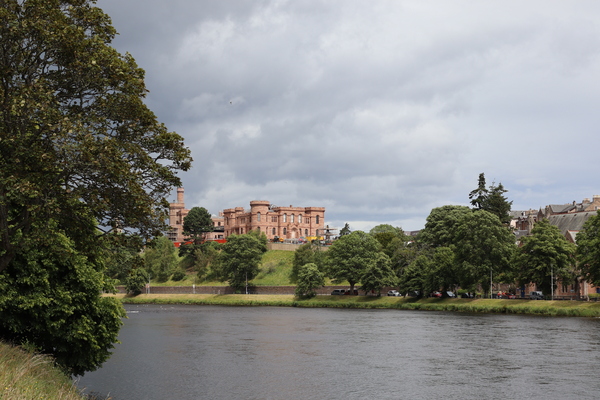
Imagine the construction work is finished
Situated on the shores of Loch Ness, the castle is almost entirely ruined, and yet remains one of Scotland's top visitor attractions. Here you can learn about 1000 years’ of history including conflict, power struggles and being blown up in 1692.
It has amazing views over Loch Ness and is one of the few places on the west side of the loch where you can reach the water – there is a small, stony beach there (no swimming). There is also a visitor centre with a small exhibition, a film show, shop and cafe.
You will be glad you're arriving by bus when you see the fight for car parking. During the summer this attraction gets incredibly busy (booking is essential). The quietest times of day are first thing in the morning and evenings.
Our favourite conditions for seeing the castle are on a dry, sunny summer's day in the late afternoon as the castle, grounds and surrounding landscape look lovely in the warm, late afternoon sunshine.
If you can, avoid days when there are cruise ships in Invergordon (check the timetable) as large numbers arrive by coach morning and afternoon. Coach tours arrive everyday but cruise ship days are particularly busy.
Transport
Option 1, Boat trip and Castle
'Temptation' tour covering a boat trip with Jacobite Loch Ness Cruises and visit to Urquhart Castle. You are transported by coach from Inverness Bus Station to the boat cruise which departs from Dochgarroch Lock. Afterwards you are brought back to Inverness by coach from Urquhart Castle.
From 10 November 2025 – 29 March 2026 the tour also includes admission to the Loch Ness Centre in Drumnadrochit.
Option 2, Castle only
Citylink service 917 or 919 from Inverness Bus Station to Urquhart Castle and back.
Option 3, Castle and Drumnadrochit
Citylink service 917 or 919 from Inverness Bus Station to Urquhart Castle. Afterwards walk 30 minutes down the hill (lovely views over the loch) or catch the 917 or 919 bus to visit the village of Drumnadrochit. Take the bus back to Inverness from Drumnadrochit (Citylink 917 or 919, or Stagecoach service 17).
What to do in Drumnadrochit: visit the Loch Ness Centre to find out all about the Loch Ness Monster, visit the tiny Great Glen Gin Distillery, have a Meet & Greet with Highland Coos, and local walks - we like Craigmonie Woods, Balmacaan Woods, and Urquhart Bay Woods.
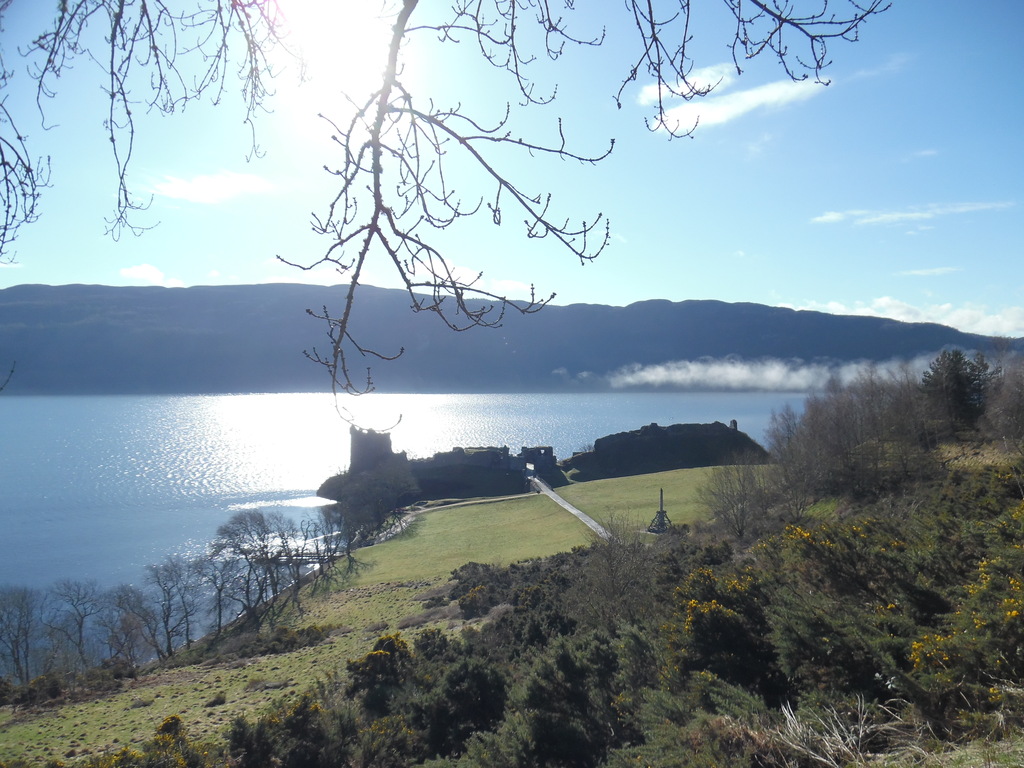
A glorious day at Urquhart Castle
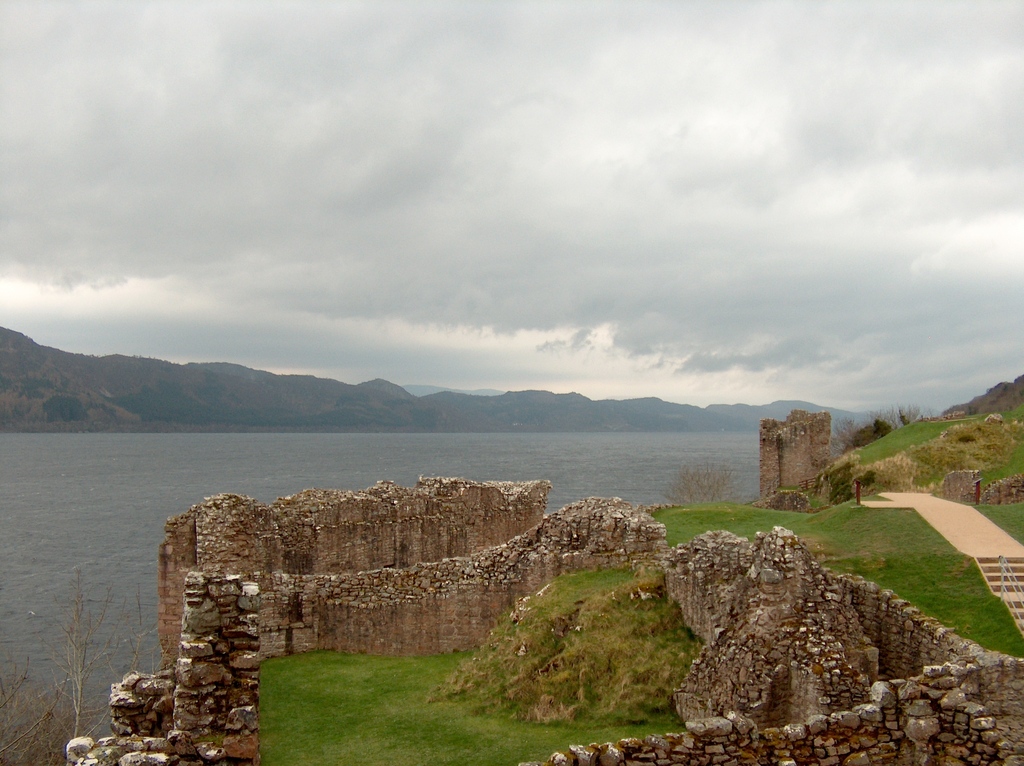
The castle is ruined
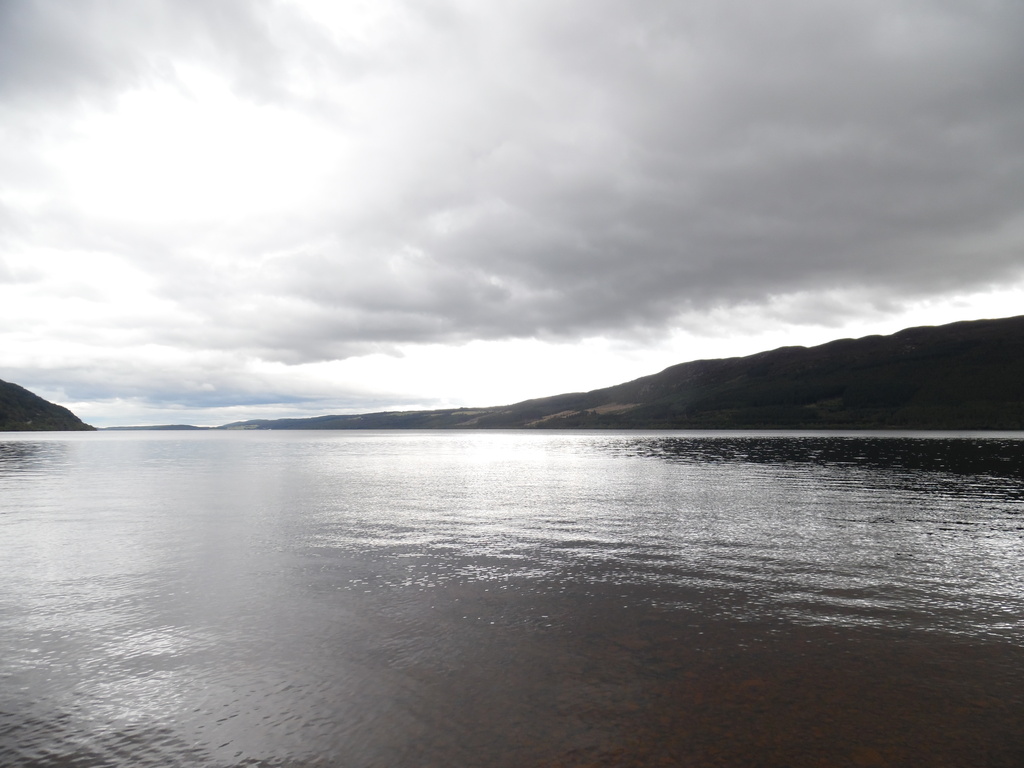
View of Loch Ness from Urquhart Castle beach
The seat of Clan Mackenzie and still home to the current chief. This magnificent castle is set in wooded grounds which contain several historical and significant trees including a Spanish chestnut with the oldest recorded planting date in Scotland.
It is open on at least 25 days over the season during which is possible to explore the castle and grounds including the woodland walk. The castle is 20 minutes' walk from the village square.
Transport: Train to Dingwall. Then 20 minutes' bus journey to Strathpeffer followed by 20 minutes' walk from the village square.
See our Guide to the attractive village of Strathpeffer for other places to visit, as well as accommodation and where to eat.
Carbisdale Castle is relatively modern having been constructed between 1907 and 1917 for Mary Caroline Mitchell, Duchess of Sutherland.
It is one of the last of such great houses to have been built. King Haakon VII of Norway and Crown Prince Olav were provided safe refuge at the Castle during Nazi occupation of Norway in World War II.
Shortly afterwards it was gifted to the Youth Hostels Association and opened as such in 1945 until its closure in 2011. Today it is a conference and retreat venue, where it is also possible to book tours and afternoon tea.
Transport: 15 minutes' walk from Culrain halt station.
See our Guide to Far North Line Halts for more details about Culrain.
Dunrobin Castle is known as the fairytale castle and is a popular attraction - advanced booking is recommended. It is the largest private residence in the north of Scotland and is set in its own woodland overlooking the sea. It has been home to the Earls and Dukes of Sutherland since 1401.
Most of the interior of the castle is open to the public. Outside, the formal gardens are amazing in summer and are also the location for falconry displays.
Also in the gardens is the castle museum. With displays of natural history and archaeology, including 1500 year old Pictish stones, it is a nationally important private collection.
Be aware the museum has a large collection of taxidermy so may not be to everyone's taste - it wasn't our favourite part. If possible choose a warm day for your visit as it is cold inside the castle.
There is also a tearoom and a shop. To fully explore the castle and the grounds would take a whole day.
Transport: From April to October the train makes a special stop on request at the picturesque Dunrobin Castle station. This is the only remaining private railway station in Britain, dating from 1874.
The building was the private waiting room for the Duke of Sutherland. From here it is 5 minutes' walk to the castle entrance.
See our Guide to the pleasant seaside village of Golspie for other places to visit, as well as accommodation and where to eat.
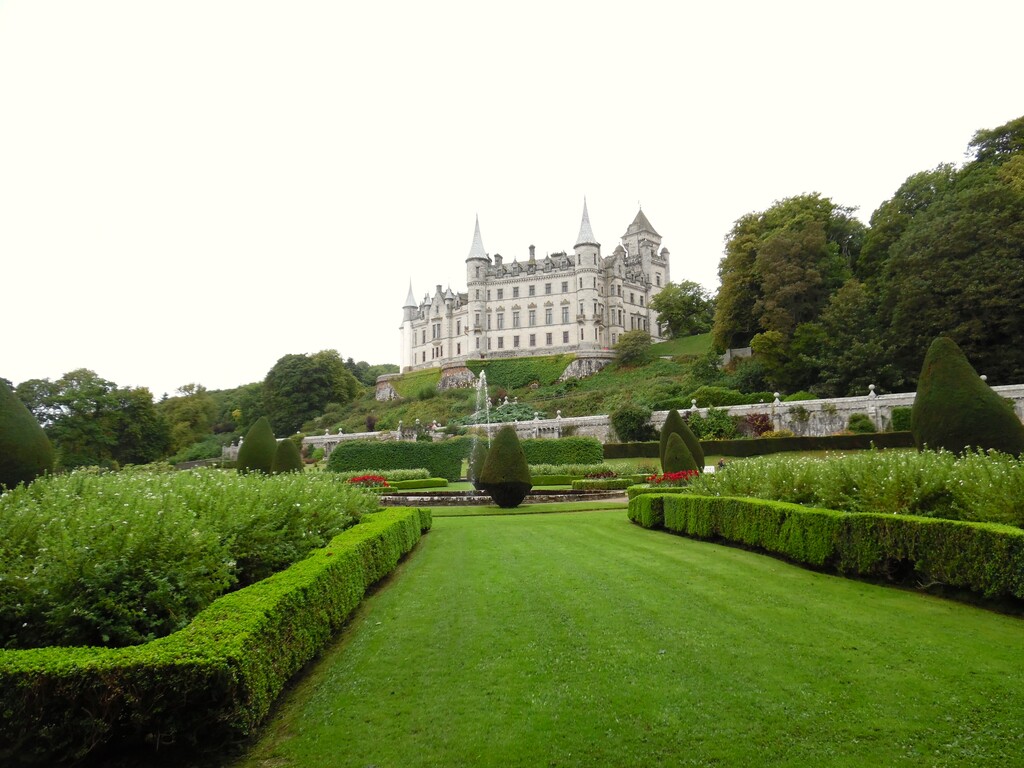
Dunrobin Castle
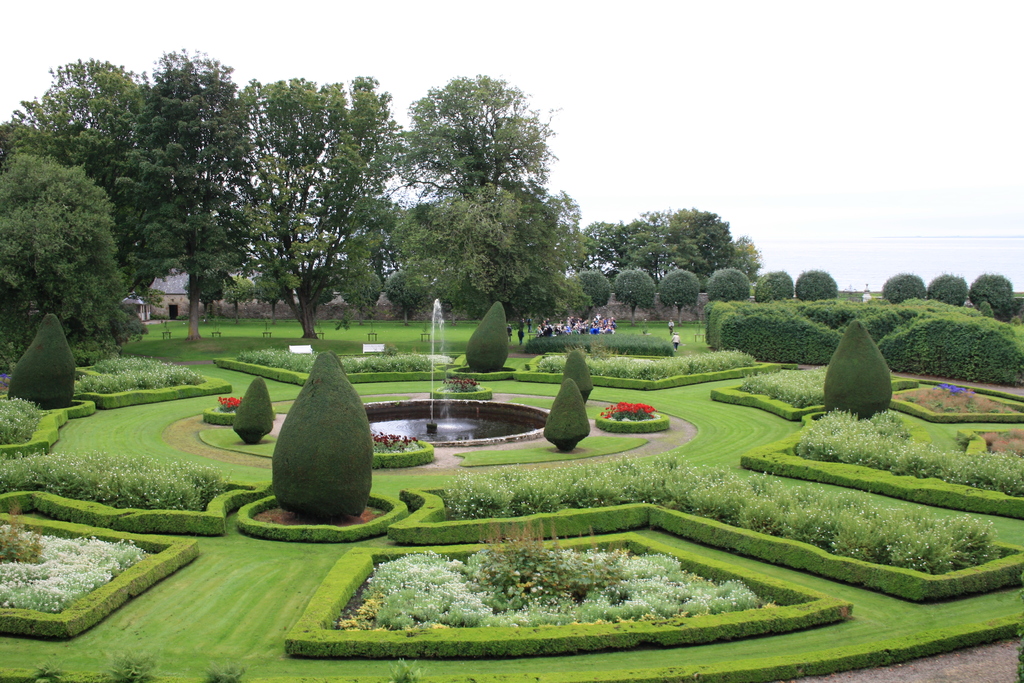
The formal gardens with falconry display
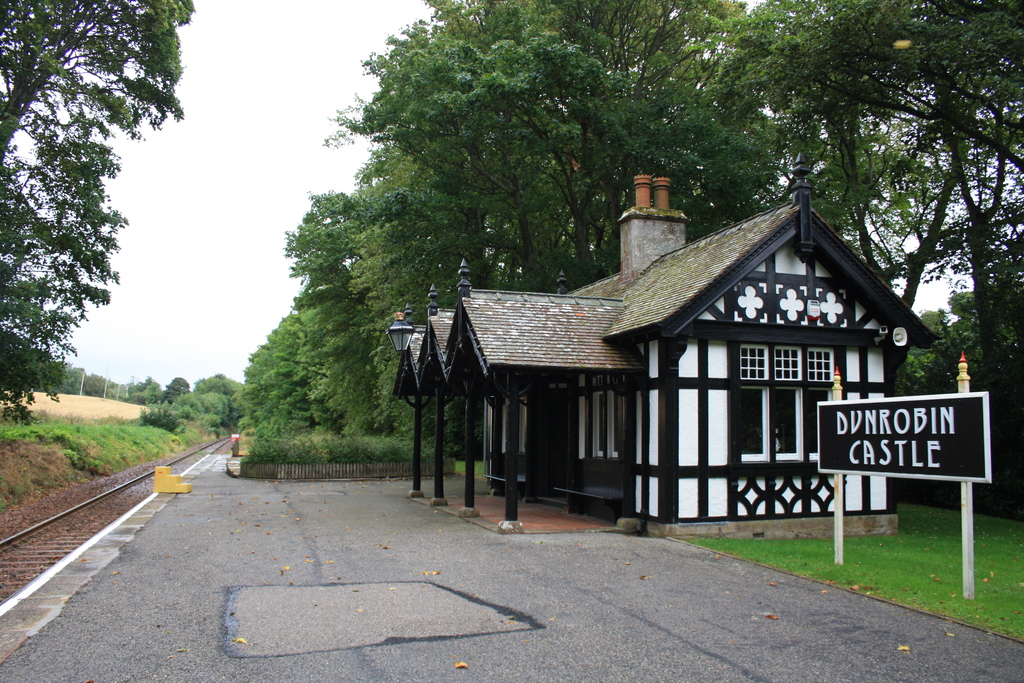
Dunrobin Castle private train station
NEARBY CASTLE & GARDENS OF MEY
The Castle & Gardens of Mey was the former home of the Queen Mother. It is now open to the public and has become a very popular attraction (but note they are closed for two weeks in the summer).
On display are the rooms just as they were during the time she lived here, including some of her personal belongings. It is in a lovely setting overlooking the firth.
As well as the castle there are beautiful gardens, an animal centre, shop and tearoom. We thoroughly enjoyed our visit.
You can even stay on the estate in luxury accommodation at The Granary Lodge B&B (reviews: 4.9 on Google, 4.9 on TripAdvisor).
Transport: 30-40 minutes' bus journey followed by 15-20 minutes' walk down the drive. See Stagecoach services 80 and 280 and alight at stop 'Mey, Post Office'.
Don't miss our Guide to the busy town of Thurso for other places to visit, as well as accommodation and restaurants.
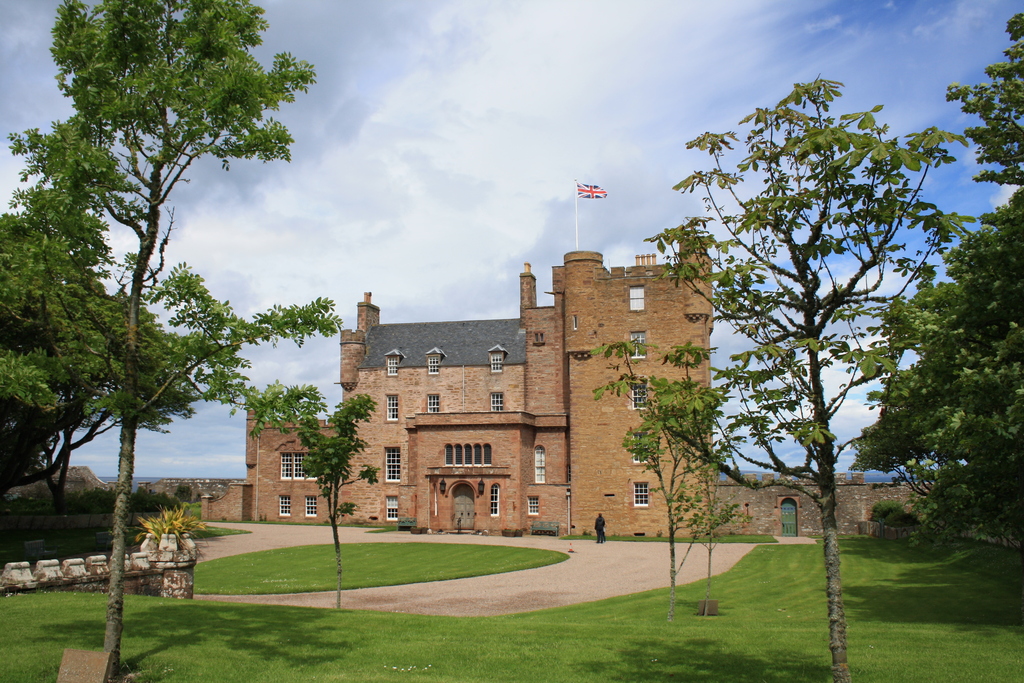
Castle of Mey
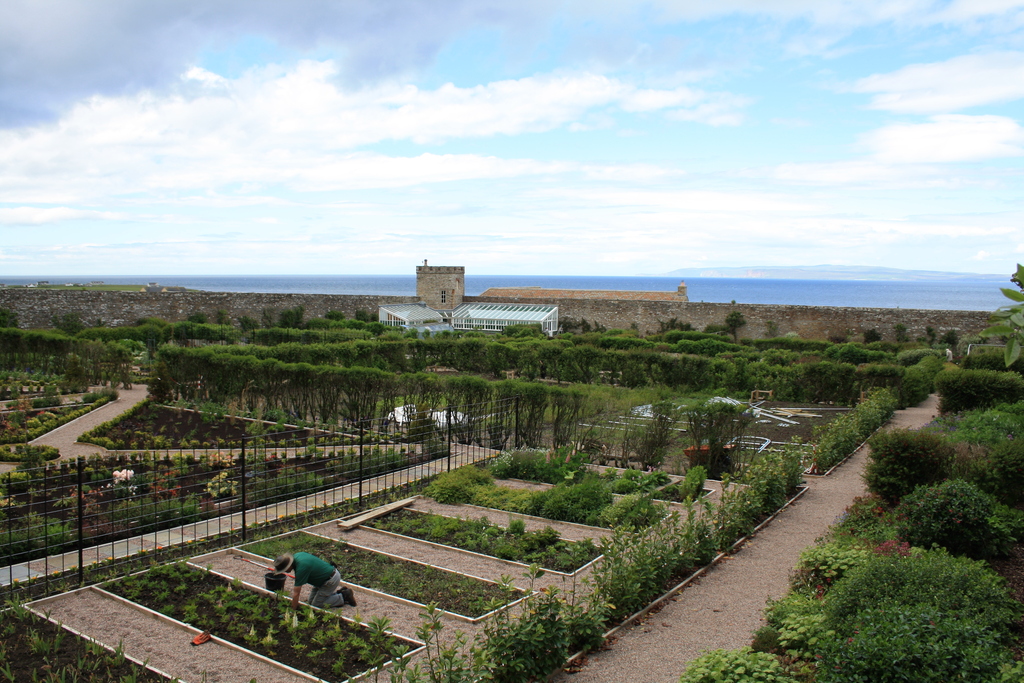
Gardens at Castle of Mey
About one and a quarter mile walk south of the town is the Old Man o Wick, or Castle of Old Wick, which is a square tower and the remains of Wick Castle. It is situated on dramatic cliffs overlooking Sinclair Bay.
Although little remains it is a very historic site being the 12th century mainland base of Norwegian Earldom of Orkney. Unfortunately there is currently no access to the site, however, you can see it from a distance.
Transport: 40 minutes' walk from Wick train station.
Don't miss our Guide to the town of Wick for other places to visit, as well as accommodation and restaurants.
This may be the most famous and photographed castle in the world. There is a good chance you will recognise it as soon as you see it.
The castle was originally built in the 13th century but had become a ruin and was rebuilt and opened in 1932.
Transport
Option 1: Train to Kyle of Lochalsh, then Citylink coach service 915 or 917 for the 15 minute journey, alighting at stop 'Dornie Bridge' which is opposite the castle. Pre-booking is highly recommended for Citylink.
See our Guide to the village of Kyle of Lochalsh for other places to visit, as well as accommodation and where to eat.
Option 2: Citylink coach service 917 from Inverness. Journey time just under 2 hours to stop 'Dornie Bridge'.
See our Guide to the coach from Inverness to Skye for more details of this service.
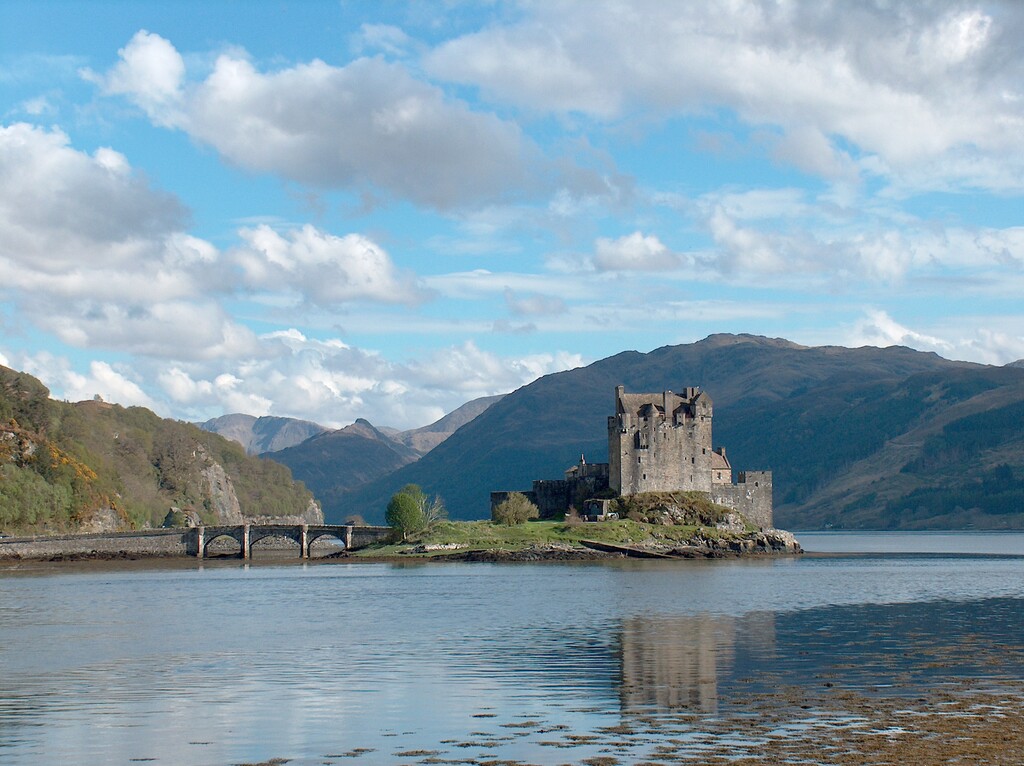
Eilean Donan Castle
See our Guide to the attractive town of Oban, seafood capital of Scotland and gateway to the isles, for other places to visit, as well as accommodation and restaurants.
NEARBY DUNSTAFFNAGE CASTLE AND CHAPEL
The castle is located in nearby Dunbeg overlooking Firth of Lorn. It is one of Scotland’s oldest stone castles, built in the 13th century for the powerful MacDougalls.
It was besieged by Robert the Bruce around 1308 and in 1746 held Flora MacDonald for a few days after her arrest for helping Bonnie Prince Charlie escape.
The Northwest tower is currently closed (October 2025).
Transport
Option 1: Alight at Connel Ferry train station. Then 5 minutes' bus journey from Connel Ferry to Dunbeg followed by a 20 minute walk.
See West Coast Motors services 405, 408 and 415 and alight at stop 'Road End', and also their service 918 (tickets for this service bookable through Citylink).
Also see the Citylink Glasgow to Oban service (numbers 975, 976, 977, 978).
See our Guide to the pretty village of Connel Ferry for other places to visit, as well as accommodation and restaurants.
Option 2: Alight at Oban train station. Then 10 minutes' bus journey from Oban to Dunbeg followed by a 20 minute walk. See West Coast Motors service 005 and alight at stop 'MacCallum Court'.
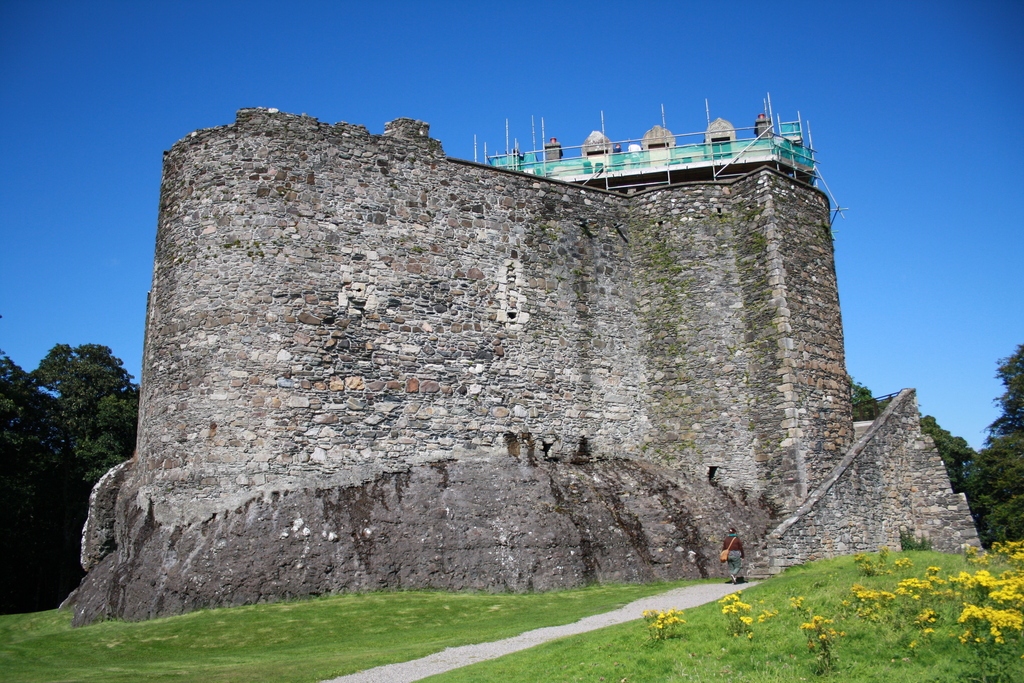
Dunstaffnage Castle
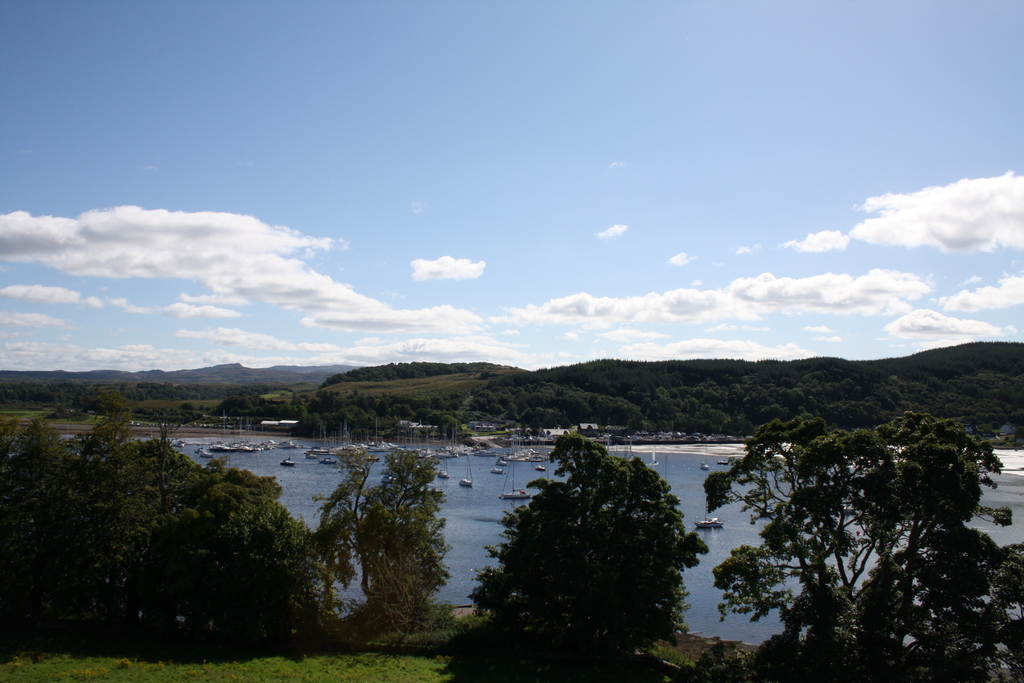
Dunstaffnage Marina from the castle
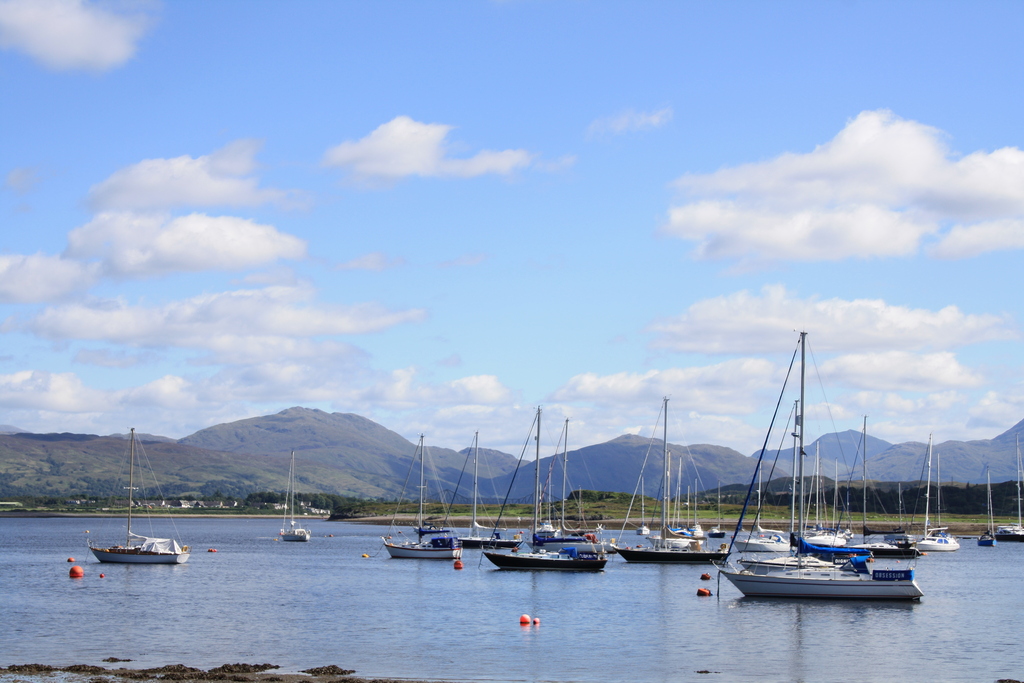
Dunstaffnage Bay
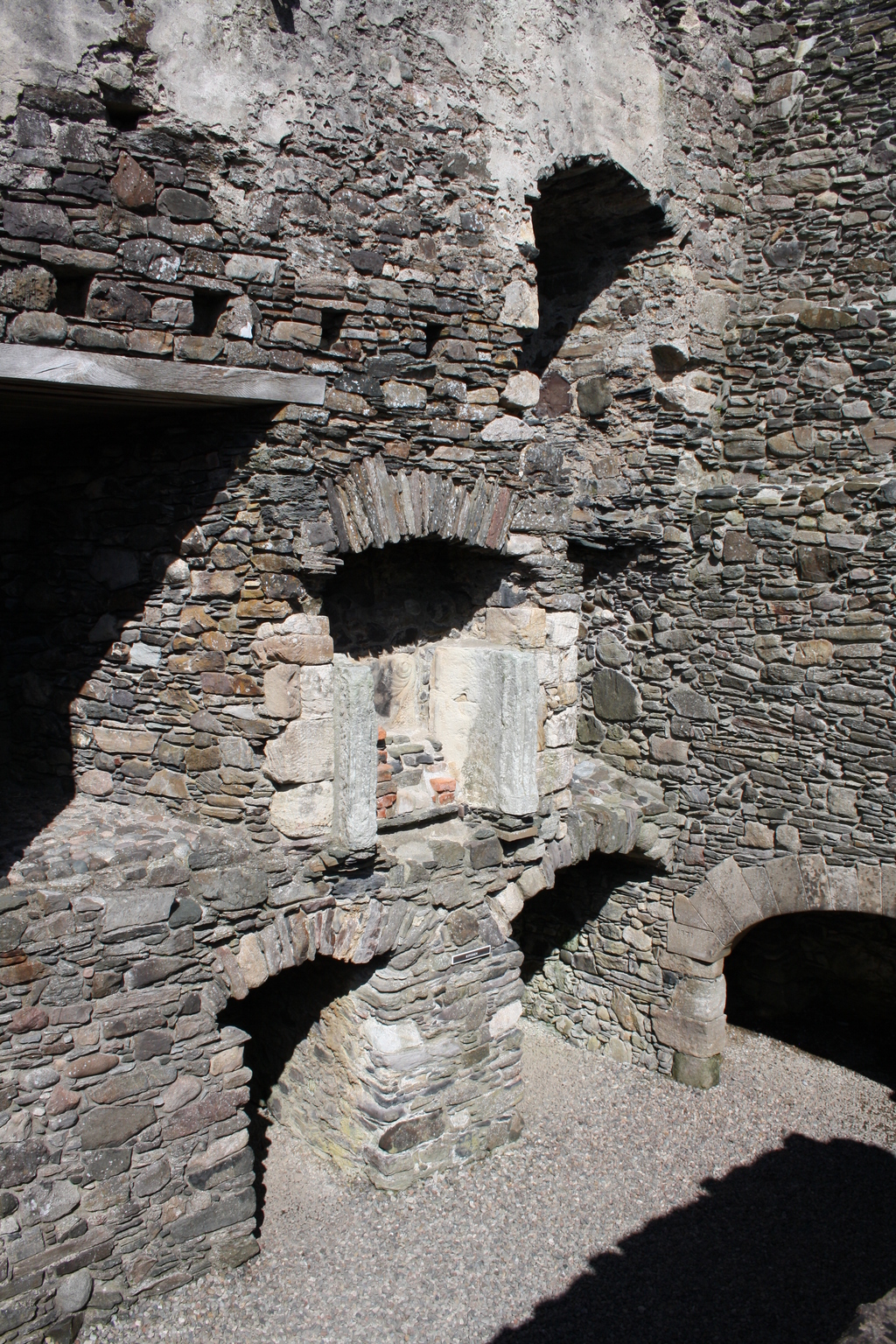
Dunstaffnage Castle interior
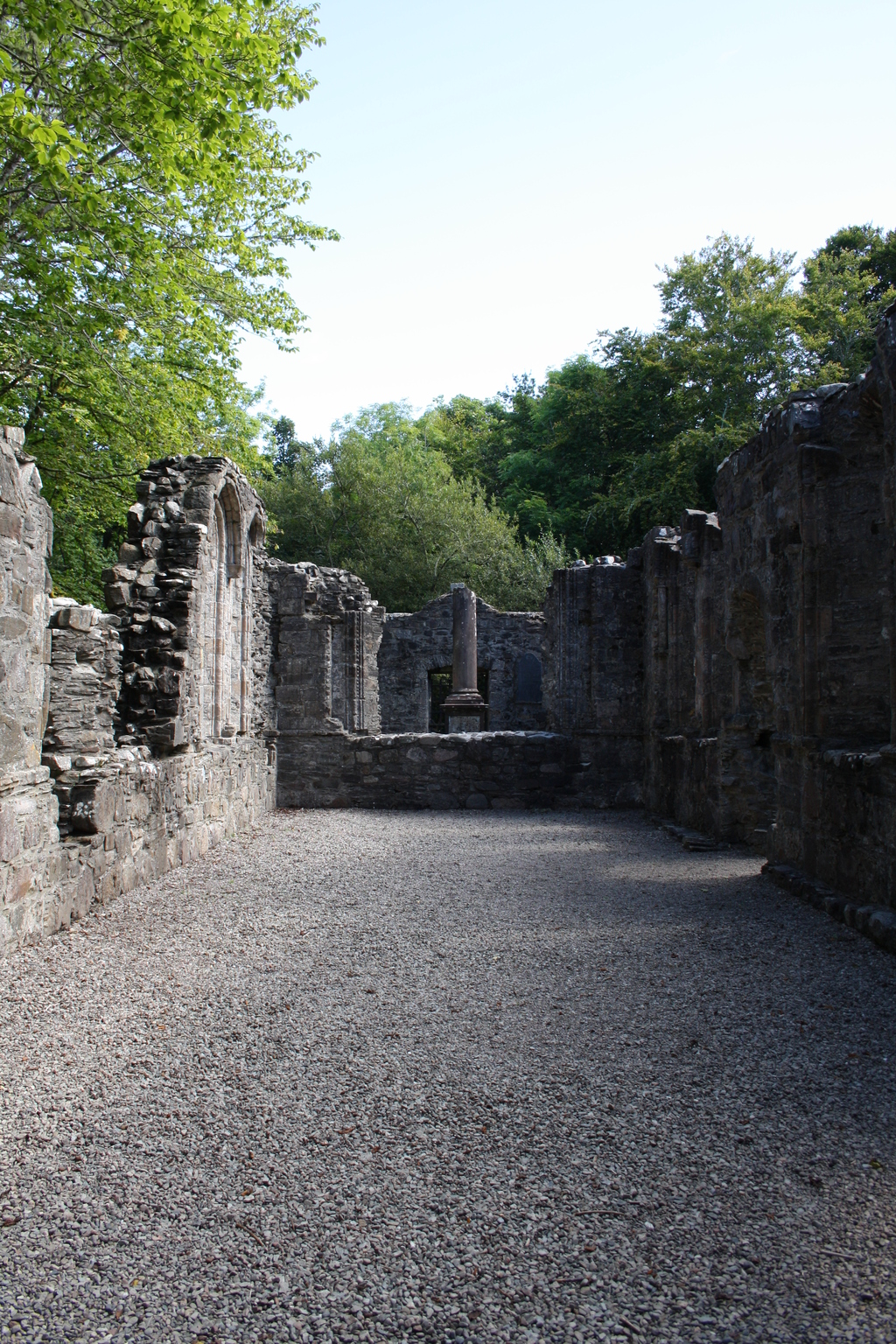
Dunstaffnage Chapel
NEARBY DUNOLLIE MUSEUM, CASTLE & GROUNDS
Dunollie castle is a medieval ruined castle on the cliffs with wonderful views. Located in the Laird’s House is a museum covering Highland social history as well as Clan MacDougall material.
You can also explore the beautiful woodland grounds, as well as visit the Draper’s Shop and cafe.
Transport: 20 minutes' walk along the esplanade as far as the War Memorial, followed by 10 minutes along the Old Carriageway Footpath.
It is possible to catch a bus as far as the War Memorial - see West Coast Motors service 417 and alight at stop 'War Memorial'.
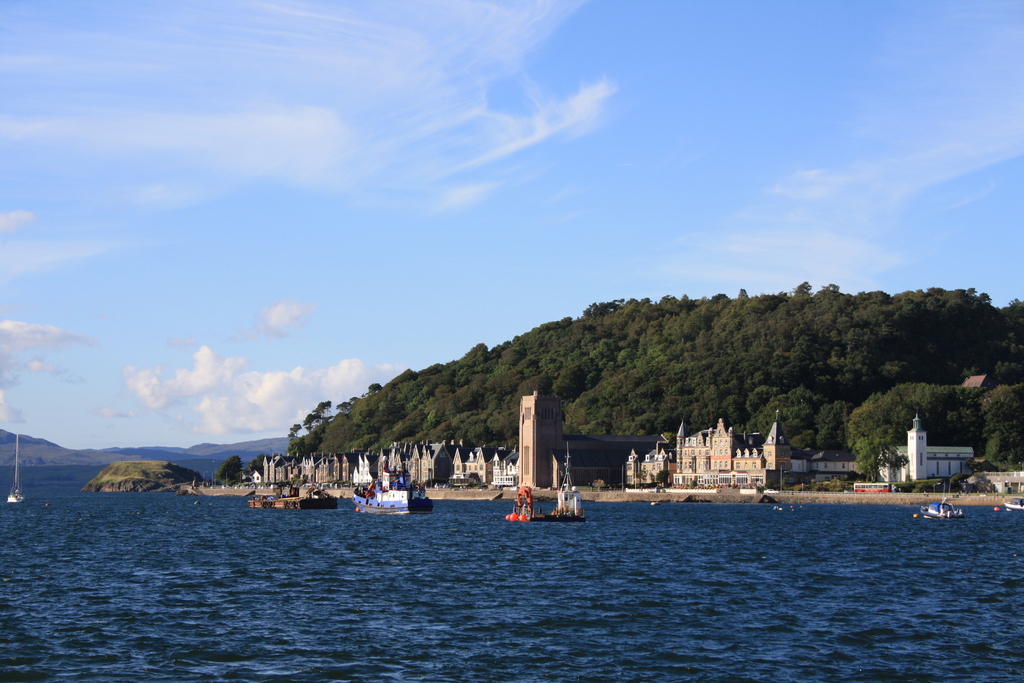
Corran Esplanade and Dunollie Wood
NEARBY BRODIE CASTLE
Brodie Castle was home to the Brodie family until the late 20th century. It is an attractive tower castle with later 17th century wings increasing the size and comfort of the residence.
Set in attractive parkland which is nice for walks and bird watching on the lake, it provides a peaceful and interesting day out. The gardens are most famous for their daffodil fields, perhaps the largest in the country. Visit in spring to take beautiful pictures of these flowers around the Castle.
Transport: Alight at Forres train station. 10 minutes' bus journey from Forres - see Stagecoach service 10 and alight at stop 'Brodie, opp Castle'. From the bus stop, it is half a mile walk, either along the exit drive or the signposted footpath.
See our Guide to Forres for more places to visit, accommodation and places to eat.
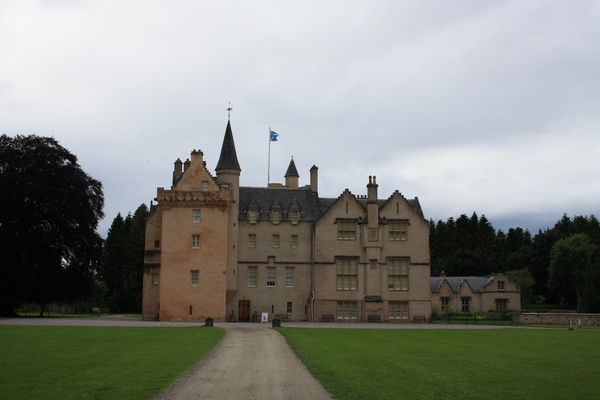
Brodie Castle
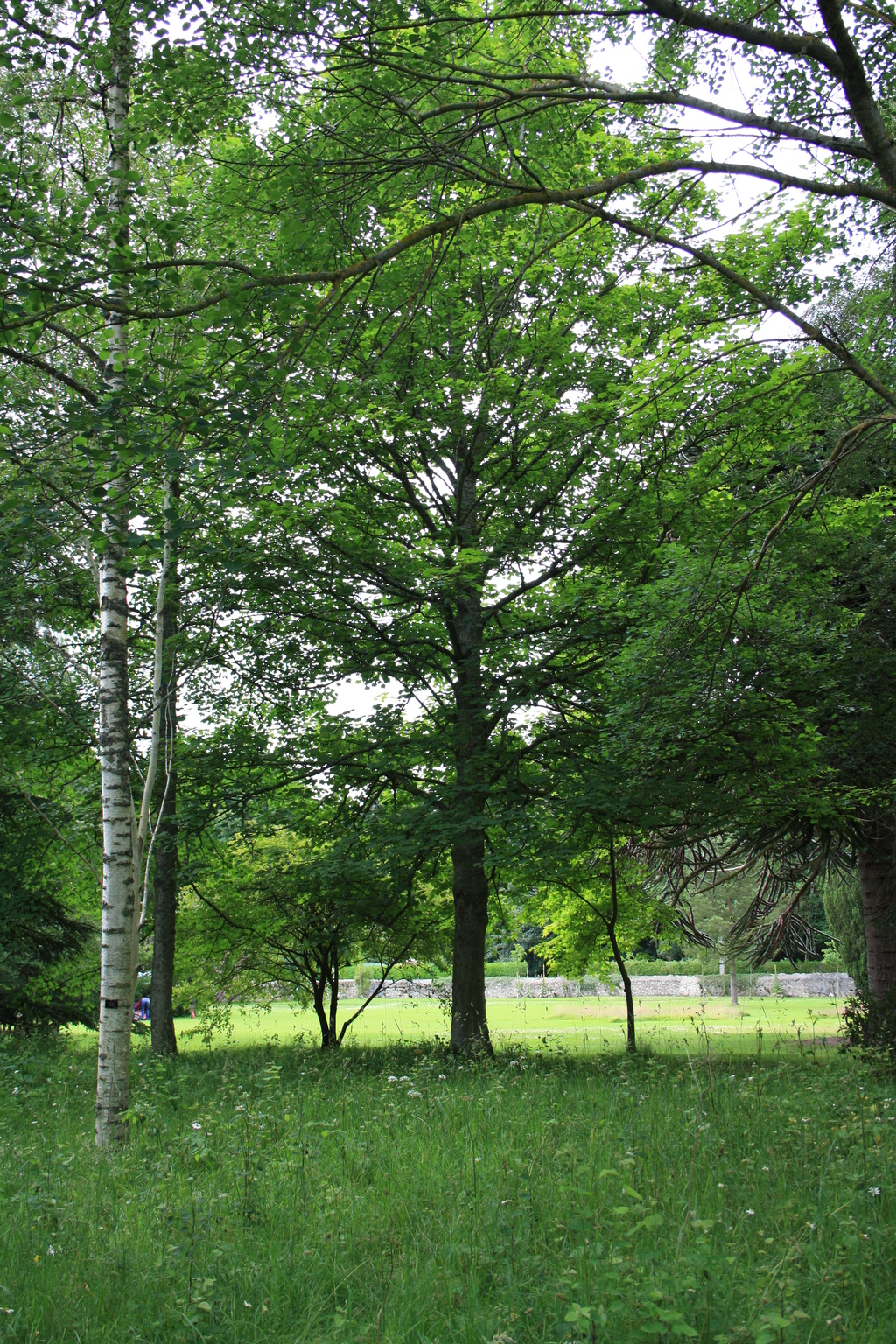
Brodie Castle parkland
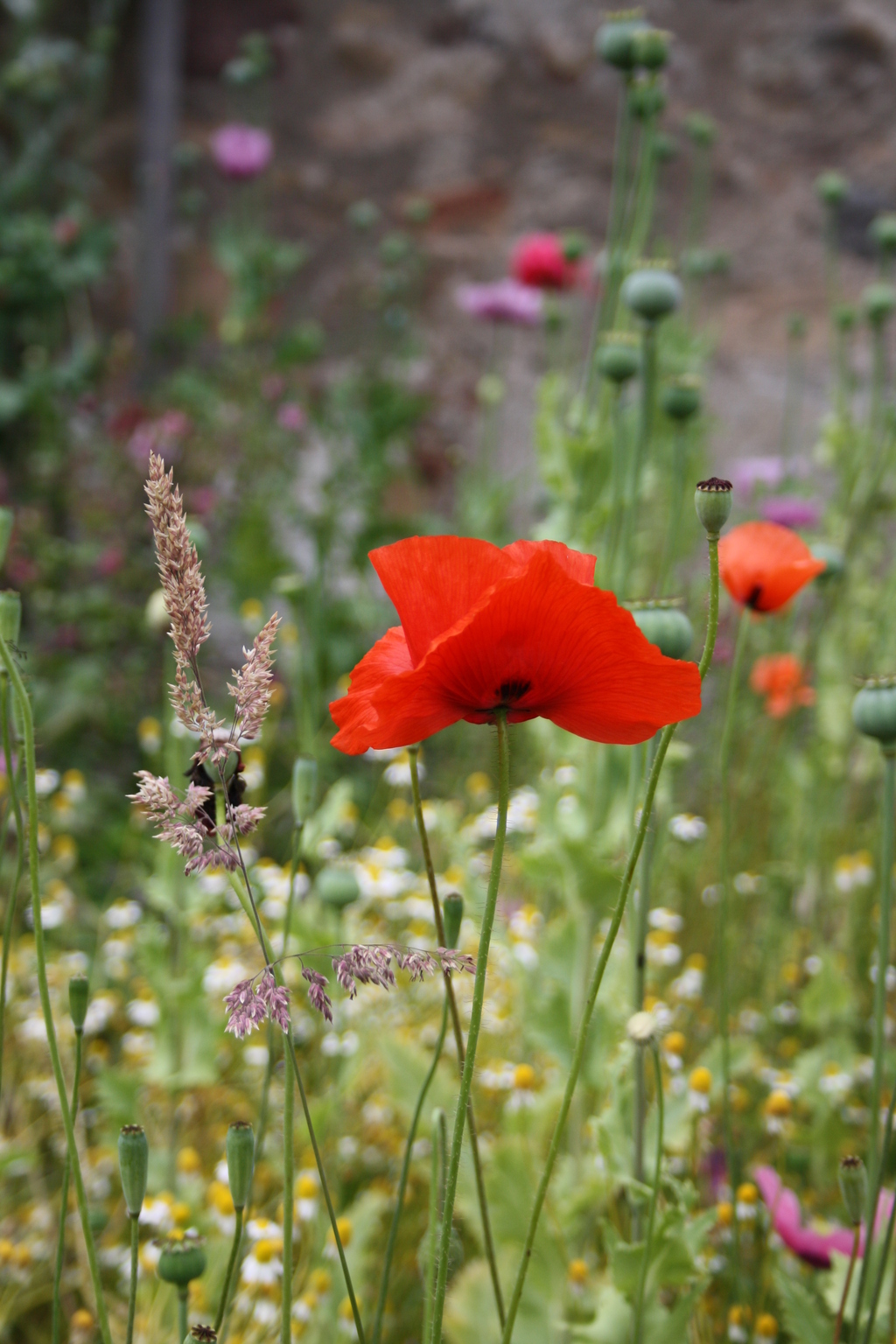
Garden flowers
See our Guide to Elgin for more places to visit, accommodation and restaurants.
The Palace was the official residence of the Cathedral Bishops. For five centuries the Palace was the residence of the Bishops of Moray.
The last Bishop left in 1689 and the Palace fell into disrepair. However, it is still an impressive building today, and half a day can be spent exploring its ruins.
Set in attractive Morayshire countryside there are excellent views from the top of the Palace’s tower. However, the scene was quite different in the past as it was then located next to a medieval town and a sea loch. Nothing remains of either and today it is birdsong that the visitor enjoys.
The most intact part of the complex is David’s Tower, one of the largest such structures to have been built.
SAVING! Joint ticket with Elgin Cathedral is available.
Transport: Alight at Elgin train station. 50 minutes' walk from central Elgin. There is a joint walking and cycle path from central Elgin.
NEARBY BALVENIE CASTLE, DUFFTOWN
Balvenie Castle is set in the attractive hills surrounding Dufftown.
King Edward I of England was an early visitor to the Castle. Of particular interest today is the curtain wall – a rare example of 13th century military architecture in Scotland.
Also of note is the Atholl Lodging – a fine example of Renaissance architecture, showing the layout of a noble residence and containing an iron yett – the two-part iron cross-barred gate behind the main entrance which is unique in Scotland.
Transport: Alight at Elgin train station. 55 minutes' bus journey from Elgin to Dufftown - see Stagecoach service 36.
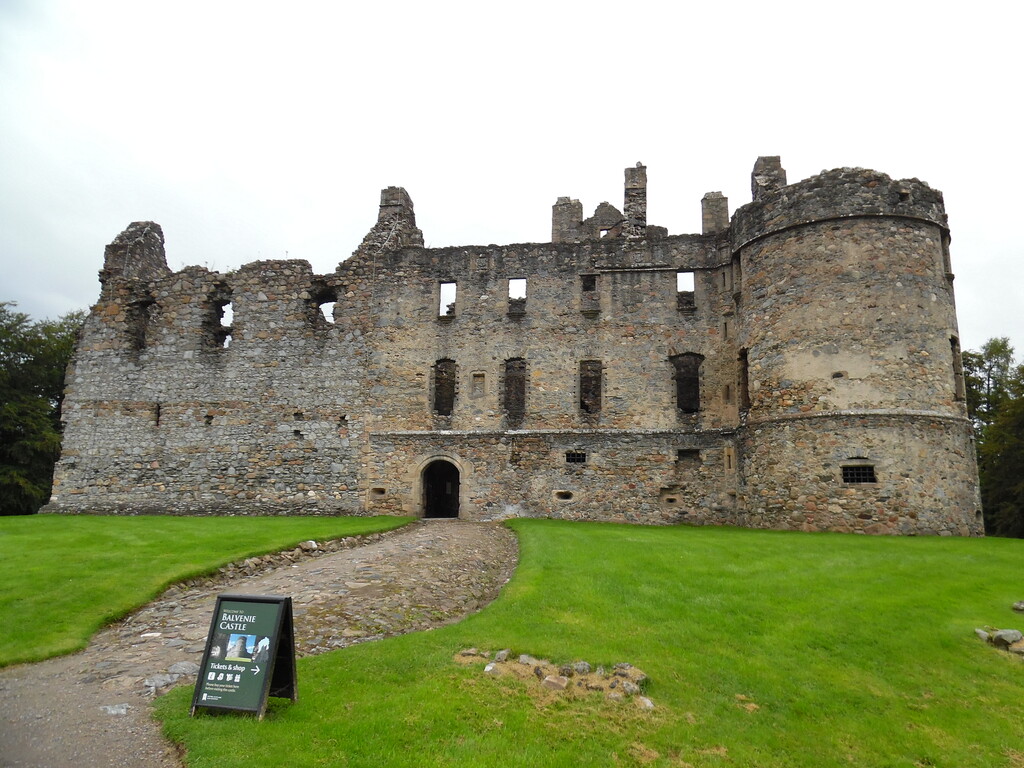
Balvenie Castle
See our Guide to Huntly for more places to visit and restaurants.
This impressive ruined castle is open to visitors. The motte dates from the 12th century while the main building was erected in the 16th and 17th centuries by the Gordon family.
The architectural details and heraldic enrichments are particularly impressive. The setting of the castle can also be enjoyed in these more peaceful times with its riverside views.
This is one of our favourite Historic Scotland properties, partly because of the beautiful approach along a tree lined road and the peaceful setting.
SAVING! You can get 25% off entry when you arrive car-free (book online with code GOOD25 and show your bus/train ticket or bike on arrival).
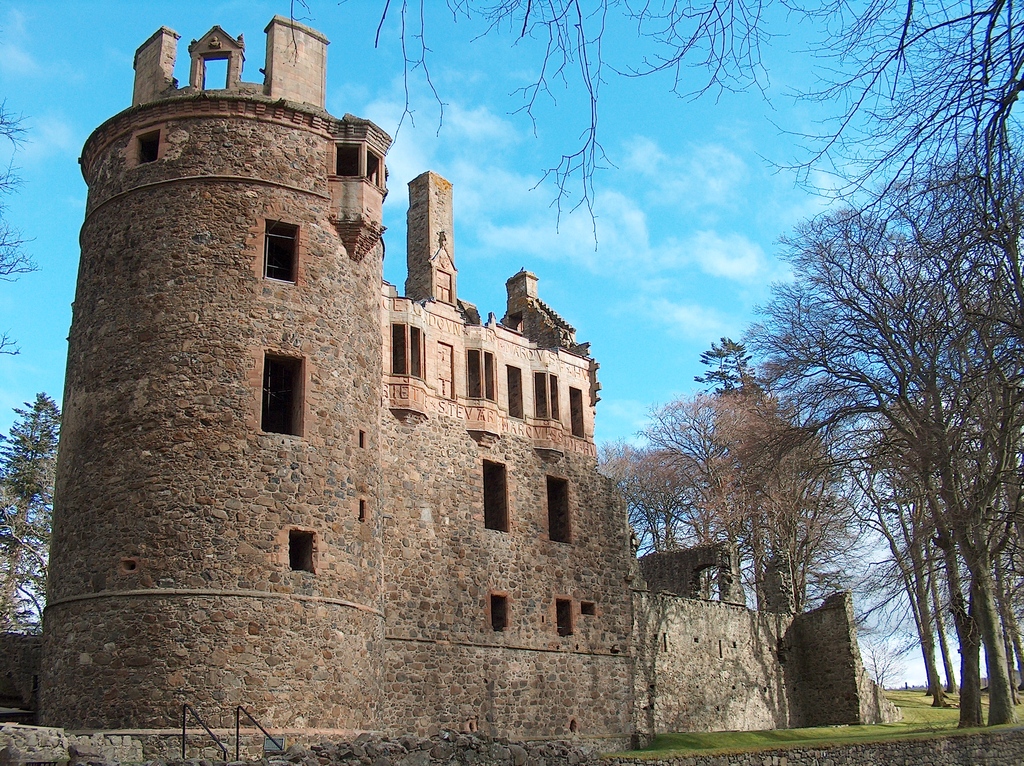
Huntly Castle
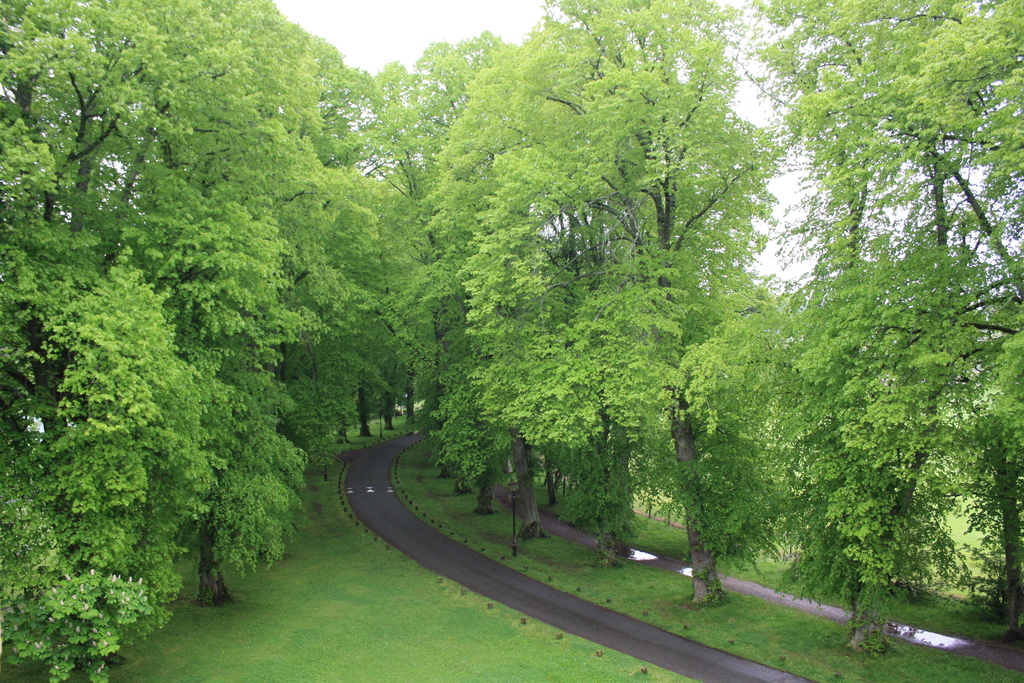
Road to Huntly Castle
See our Guide to Aberdeen for more places to visit, accommodation and restaurants.
PLACES OF INTEREST FURTHER AFIELD - BUS TO BREAMAR
Route: Aberdeen - Crathes - Ballater - Braemar
Journey length: 2 hours 15 minutes
Service: Stagecoach service 201
Crathes (not to be confused with Crathie near Balmoral Castle)
The National Trust owned Crathes Castle, Garden and Estate is one of Scotland’s finest castles. The riverside setting in spectacular Deeside scenery makes the trip worthwhile in itself.
While visiting look out for the original 16th century painted ceilings in the Castle, and the yew hedges in the gardens. There are also six woodland walks around the Estate to choose from.
Ballater
Shortly after the village of Ballater the bus stops at the Balmoral Castle (alight at stop 'Crathie, at Balmoral Road End'). The Castle was purchased by Queen Victoria in 1848 and the Estate has been the Scottish home of the British Royal Family ever since.
The grounds, gardens, an exhibition room, restaurant and gift shop are open to the public. We enjoyed visiting here and walking in the grounds.
Braemar
On the outskirts of the village of Braemar, 15 minutes' walk from the centre, is Braemar Castle. This striking community run castle was reopened in 2024 after a community project to conserve and redevelop it.
Dating from 1628, it has had roles as a hunting lodge, redcoat military garrison after the Jacobite risings, then high society retreat. Inside there are ten rooms to explore.
In the grounds there is also plenty to explore, including a 1930s kitchen garden and a thatched 19th century folly.
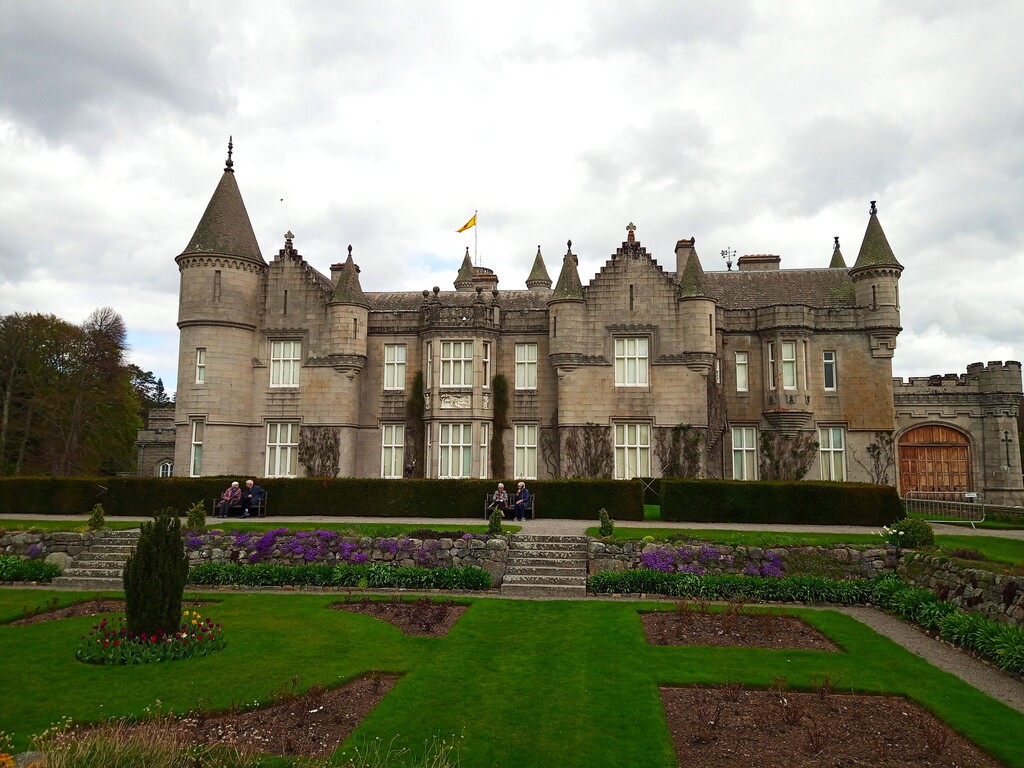
Balmoral Castle and Gardens
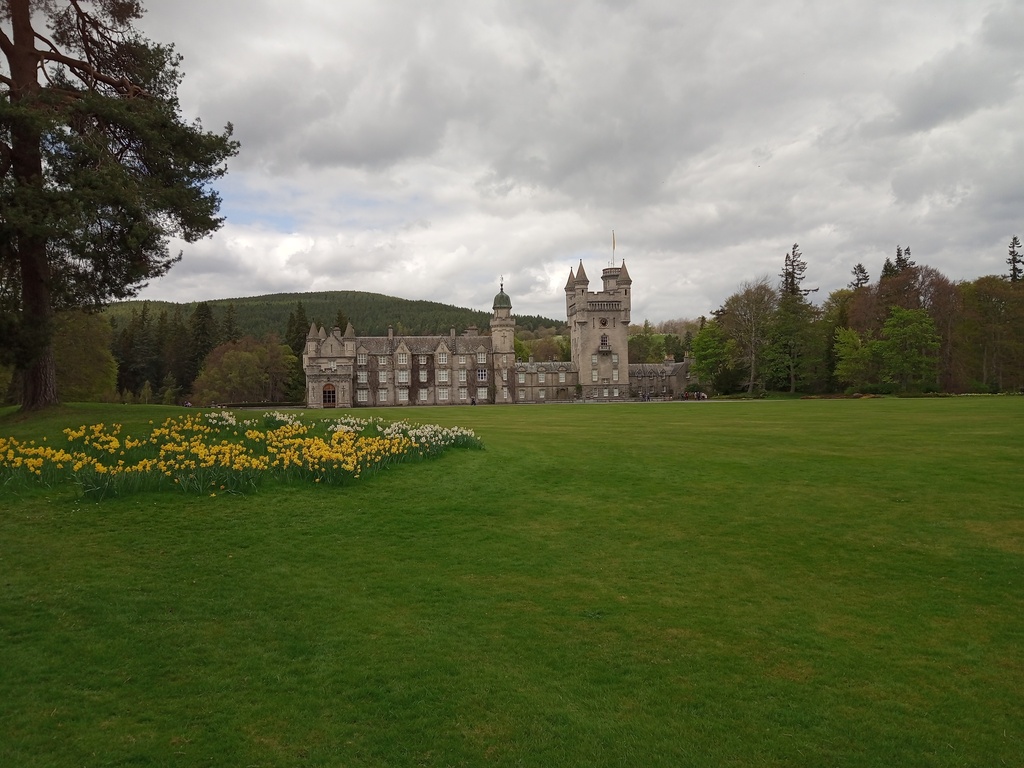
Balmoral Castle
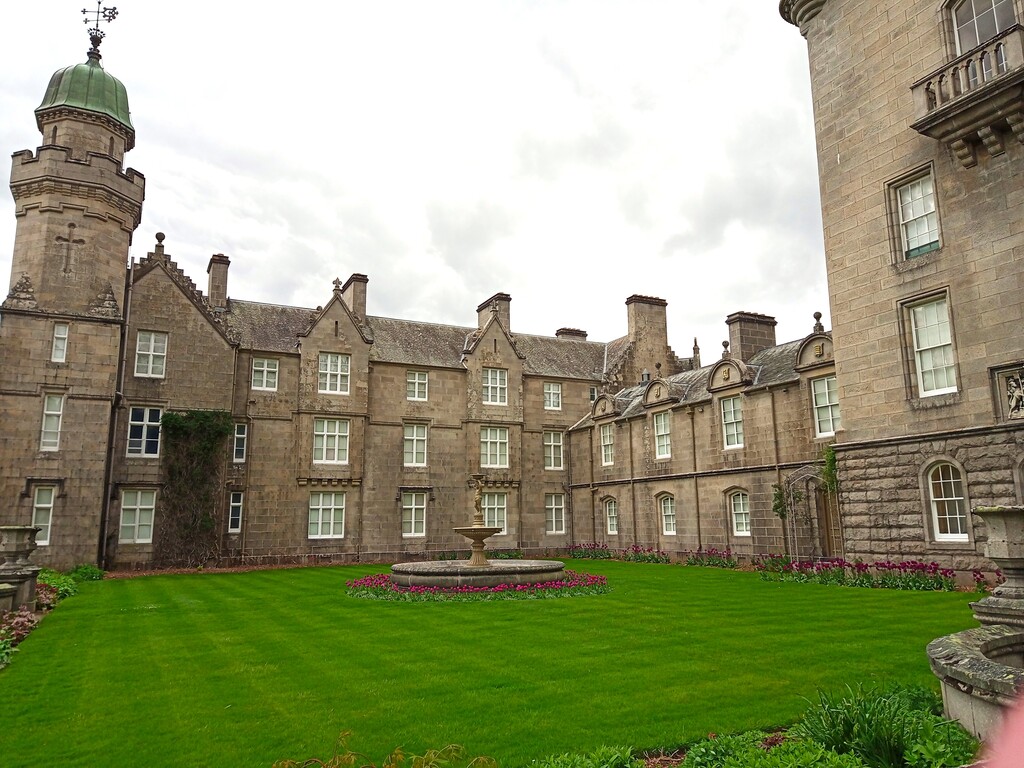
The castle close up
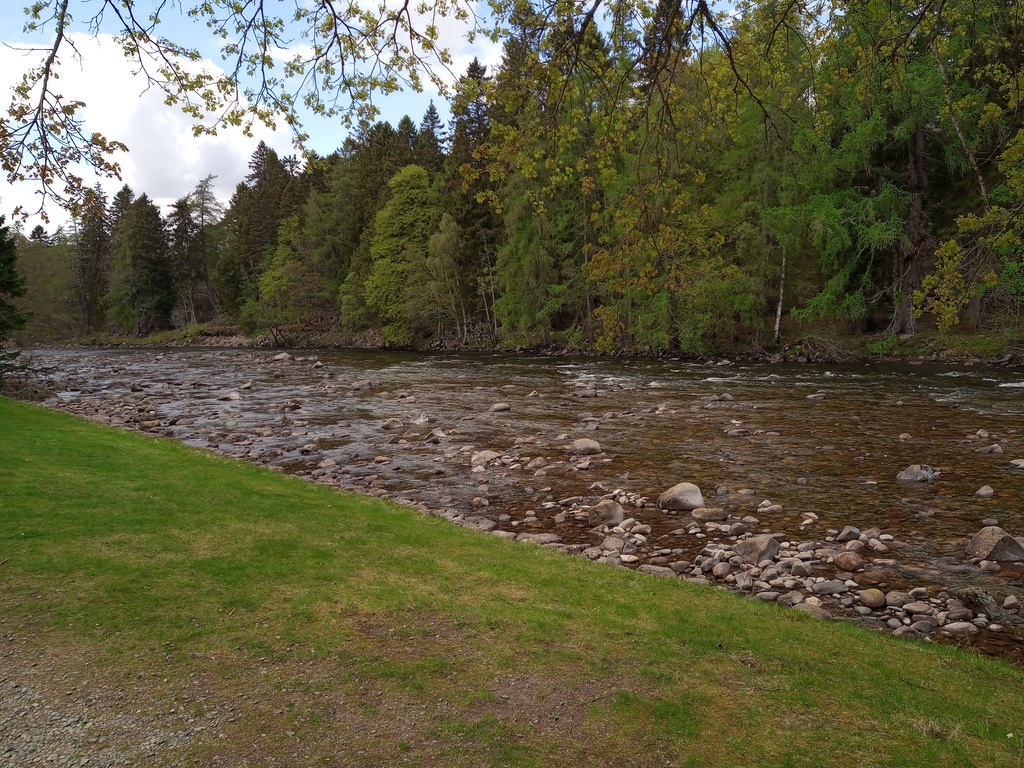
Walking in the grounds takes you along the River Dee
See our Guide to the stunning islands of Orkney for other places to visit.
Kirkwall was the capital of Orkney under the Norse held Northern Isles. However in 1469 when Christian I of Norway failed to pay the dowry promised to his son-in-law, James III of Scotland, the islands were returned to Scotland.
There were two seats of power in Norse Orkney, the Castle (demolished 1615) and the Palace. The Bishop’s Palace was built around the same time as the Cathedral in the 12th century.
In 1263 King Hakon IV of Norway passed away in the Palace while on a visit to Scotland. The Earl’s Palace is much later having been constructed in 1606 by Earl Patrick of Orkney. It is another spectacular building with great detail in its construction.
Both are now ruined but open to the public (admission charge) with a visitor centre. They are five minutes’ walk from the bus and local ferry terminals and located opposite the Cathedral.
Upper floor of the Great Hall, Lair's bedchamber (Earl's Palace) and upper level of Moosie Tower (Bishop's Palace) are currently closed. (September 2025)
Transport: 5 minutes' walk from Kirkwall Travel Centre.
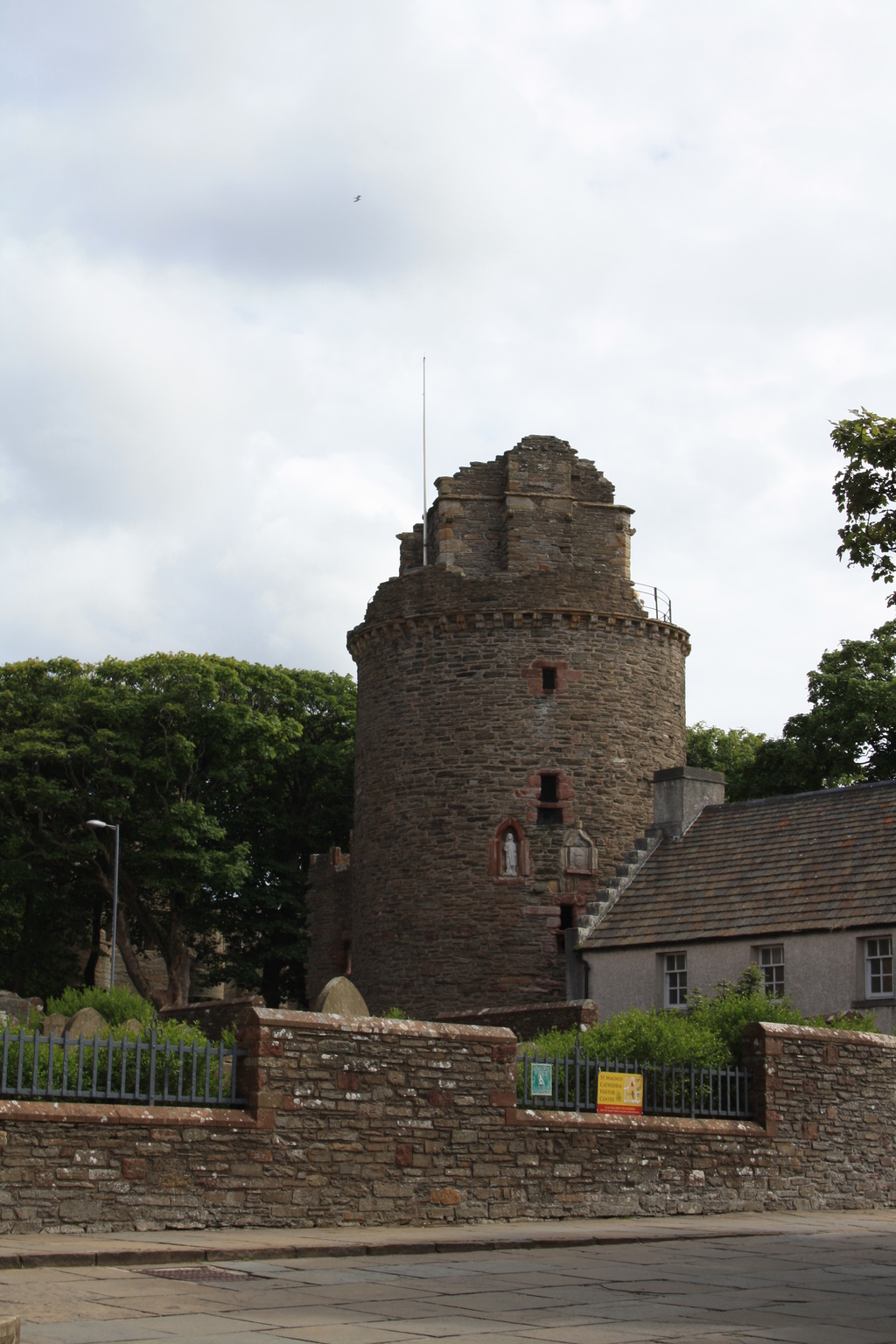
Bishop Reid's Tower, or Moosie Tower
The castle is not ruined but rather was never completed. It is a fine, Z-plan tower, built between 1560 and 1573 and is remarkable for its large number of gun loops and impressive staircase.
Westray Island is only 4 miles long by 1 mile wide. Westray has a nice sandy beach on its south end and a pleasant small harbour. It is mostly farmland and a small community which lives scattered over the Island.
Transport: Ferry from Kirkwall to Westray Island. The castle is about a mile west of the ferry pier.
See our Guide to the Outer Hebrides for more details about this collection of islands.
This is the main attraction on the island of Lewis. It houses a museum on the history of the Isle of Lewis and Gaelic language, as well as a cafe and shop.
Transport: 15 minutes' walk from the centre of Stornoway.
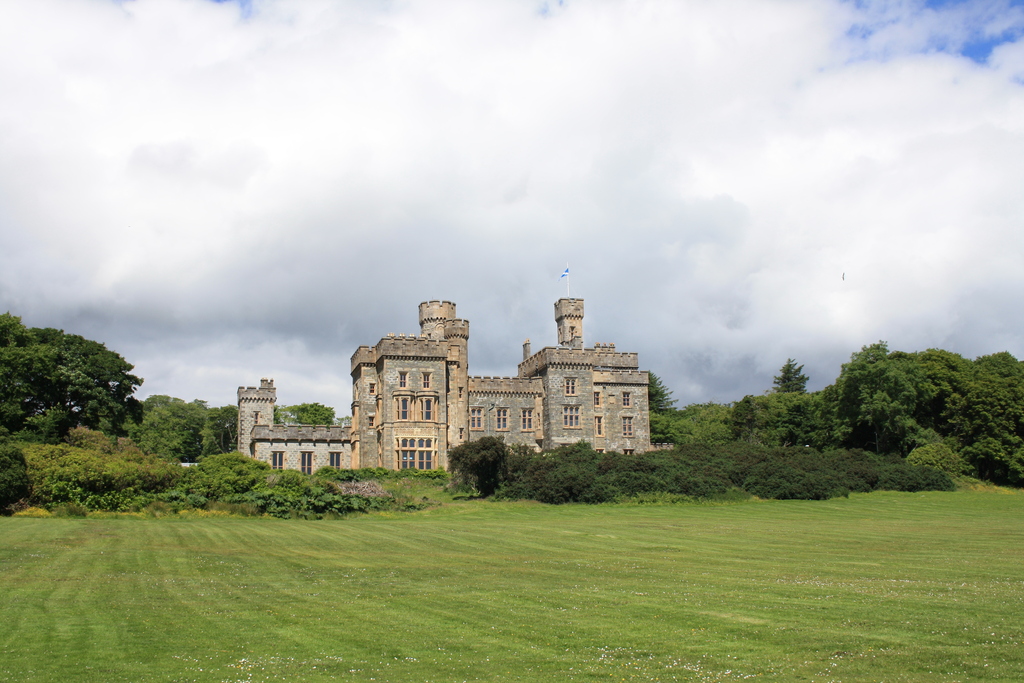
Lews Castle
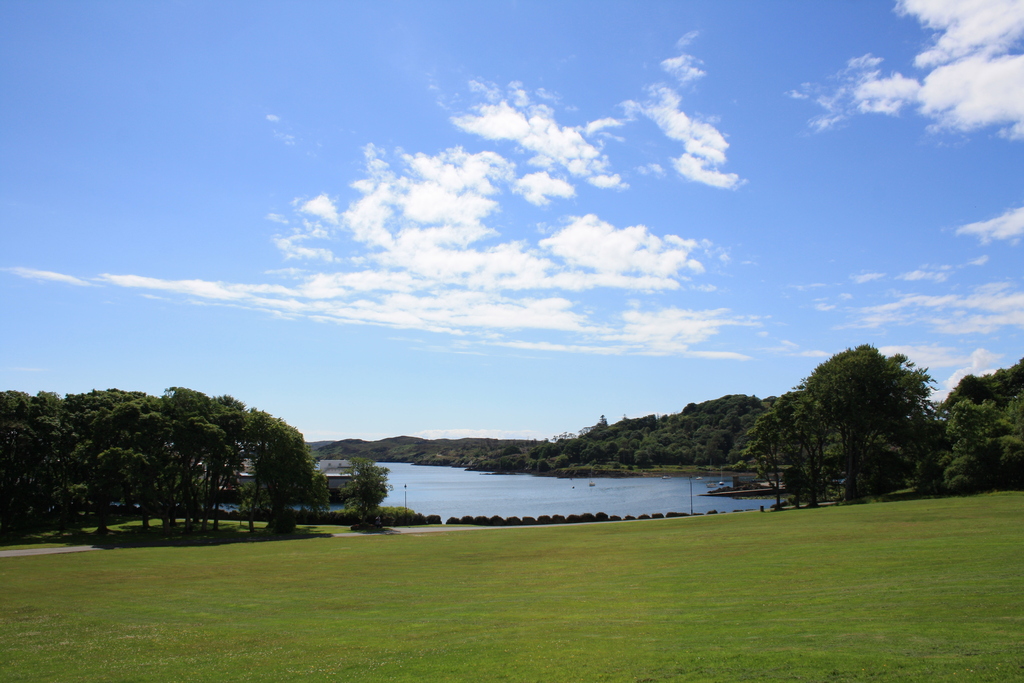
View from Lews Castle
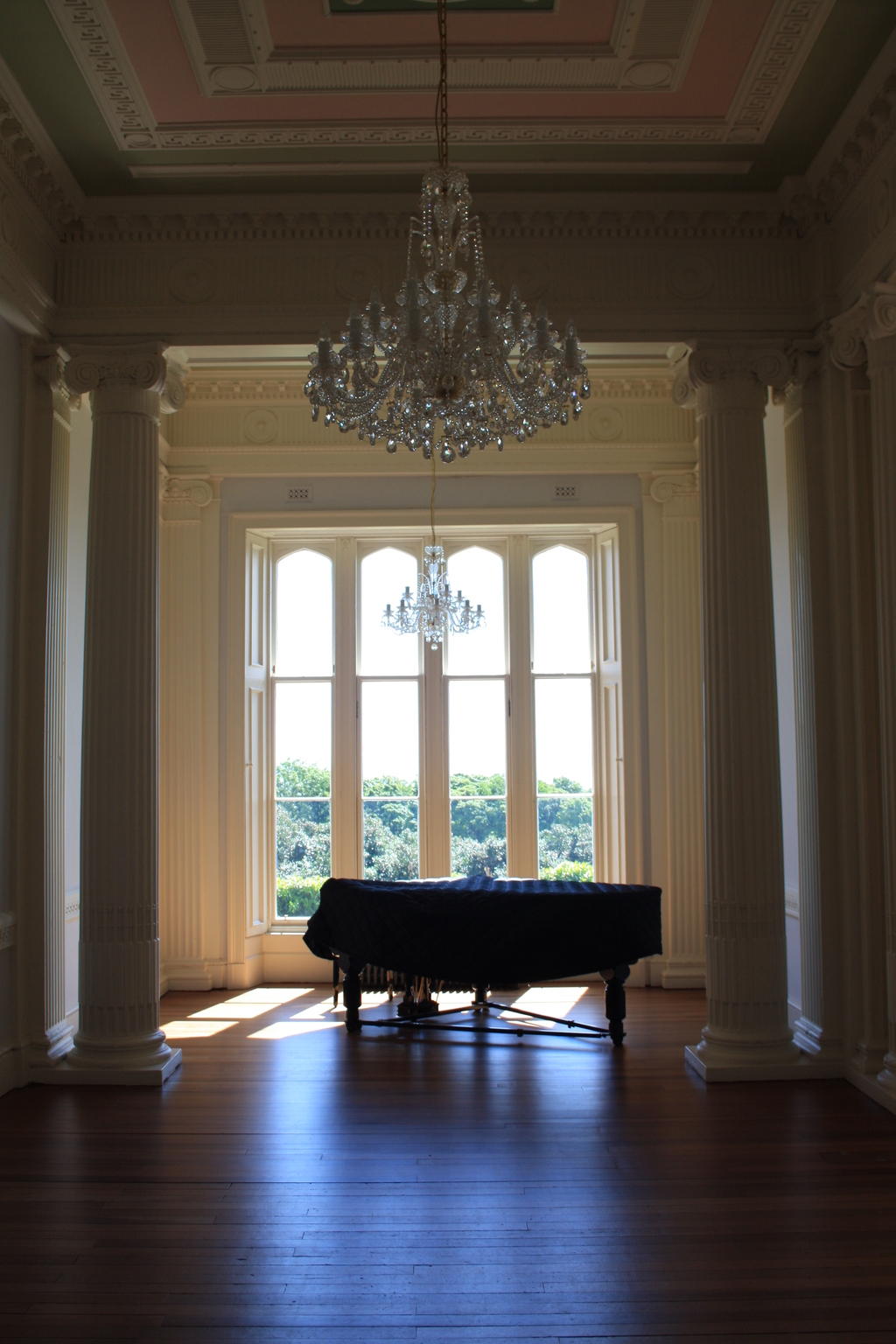
Inside Lews Castle
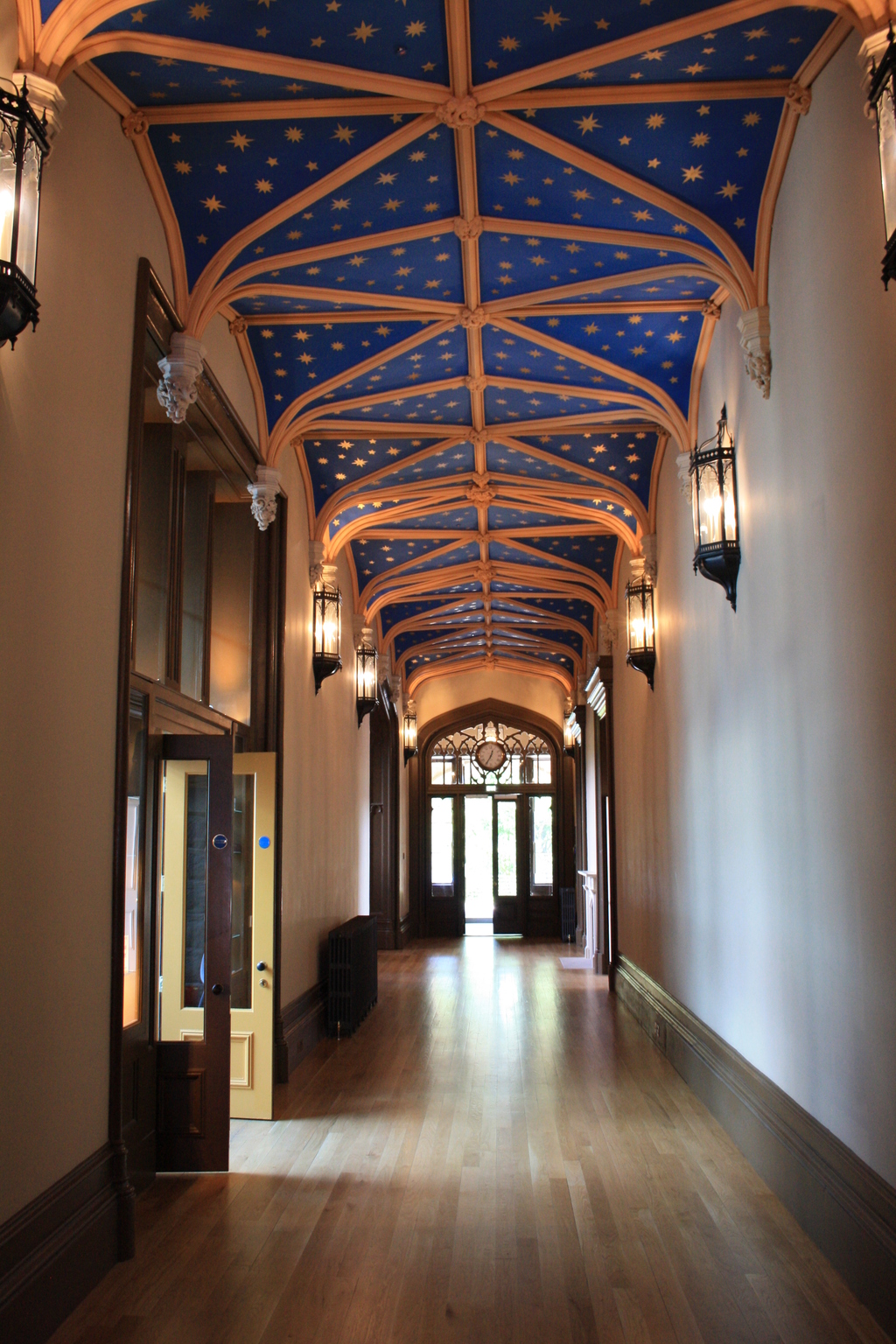
Ceiling in Lews Castle
The castle was closed for conservation work during the 2025 season. Boat trips were offered around the castle.
This castle is the island’s main formal attraction. Known locally as ‘the castle in the sea’, Kisimul is situated on a tiny island off the shore from Castlebay which it literally covers the entire area of, rather like a lighthouse.
The Castle consists of a central tower with is surrounded by a curtain wall inside which are various ancillary buildings. It dates mostly from the 15th century.
The property is open from April until September weather permitting due to the boat trip to reach it.
Transport: 5 minute boat trip from Castlebay.
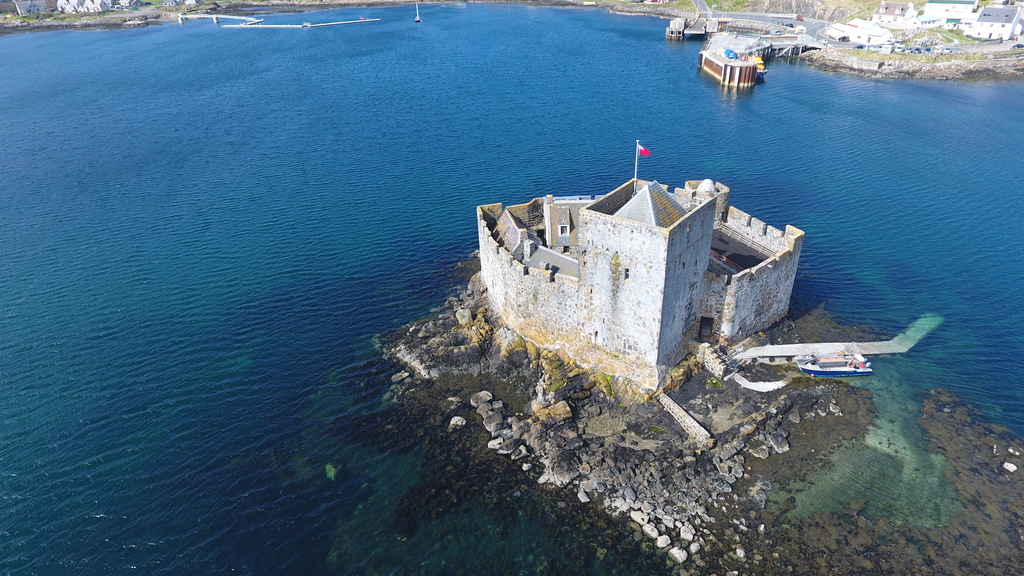
Kisimul Castle
Photo credit: “DJI_0075” by Conor Lawless, CC BY 2.0
See our Guide to Skye for more details about this hugely popular island.
ARMADALE CASTLE, GARDENS AND MUSEUM OF THE ISLES
Currently for sale, open for the 2025 season
Armadale Castle, Gardens and Museum of the Isles is actually two attractions in one. The site was taken over by the Clan Donald Lands Trust in 1971, who have restored this 40 acre woodland garden beside the Castle.
These beautiful gardens benefit from almost frost free conditions and have existed since the 17th century. There are also woodland walks and nature trails for those less interested in formal gardens.
These are all set within the grounds of the Castle, which although at first glimpse looks complete, is actually now a ruin without any interior.
The Museum of the Isles is housed in a purpose built building and despite its small size it has excellent displays as well as a library and archives. Also on the site is the Stable Block which now contains a gift shop and restaurant.
Transport: 15 minutes' walk from the centre of Armadale.
Dunvegan Castle and Gardens is probably one of the most famous locations on Skye. For over 800 years it has been the home of the Chiefs of Clan MacLeod and as such is the oldest inhabited castle in Scotland.
Its position overlooking the sea Loch Dunvegan and surrounded by landscaped woodlands and gardens is stunning. In fact the gardens are as much an attraction as the Castle itself and you may enjoy the walled garden, water features, round garden and woodland areas.
Sitting in what is essentially barren moorland of northern Skye; these gardens laid out in the 18th century are like finding a hidden oasis in the desert. Due to the warmth of the Gulf Stream visitors are often amazed at the types of plants which thrive in these gardens.
The Castle itself is a fascinating complex of six buildings, five of which are open to the public. Boat trips to visit the seals are also offered as a supplement to visitors to either the Castle or Gardens.
Transport: There is a regular bus service (no Sunday service) from Portree to the castle - see Stagecoach service 56.
See our Guide to the Inner Hebrides for more details about this collection of islands.
ACHADUN CASTLE
Also known as Achanduin Castle, this was once the residence of the Bishops of Argyll. There is very little remaining of the Castle but the views, as all parts of the island are amazing. Lismore has a tranquil, rolling landscape.
Transport: 3.5 to 4 hours' walk from the ferry terminal at Achnacroish.
CASTLE VARRICH
This is a ruined castle with impressive views over Kyle of Tongue.
Transport: Footpath from the village.
See our Guide to the Lairg to Tongue journey for where else to visit, accommodation and where to eat.
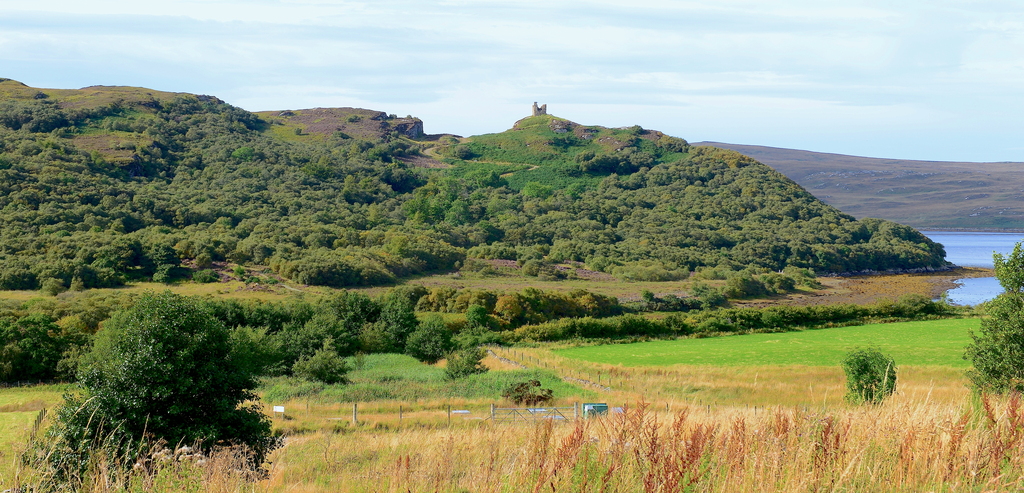
Castle Varrich
Photo credit: “ScotlandSep15_76” by Richard Szwejkowski, CC BY-SA 2.0
Page last updated 11 December 2025